- Turbo engine adds extra grunt and towing ability
- Despite price rises, still good value
- Excellent interior - practical and good quality
- CVT automatic zaps some life from the engine
- Fuel consumption climbs rapidly in town driving
- Missing kit like a 360-degree camera
It’s no secret that the world is turning towards SUVs for its new car purchases, so much so that in a lot of markets – like Australia – SUVs sell stronger than passenger cars. SUV sales have come at the cost of particularly the mid-size sedan and wagon, and various car makers such as Ford have cut them out of their lineups completely. But in all this SUV madness, we’re happy to report that there’s an imposter and it’s been selling big since its release in the 1990s: the Subaru Outback, which draws buyers in because they think it’s an SUV. Is the 2023 Subaru Outback Touring XT all the family car you could ever need? Let’s find out.
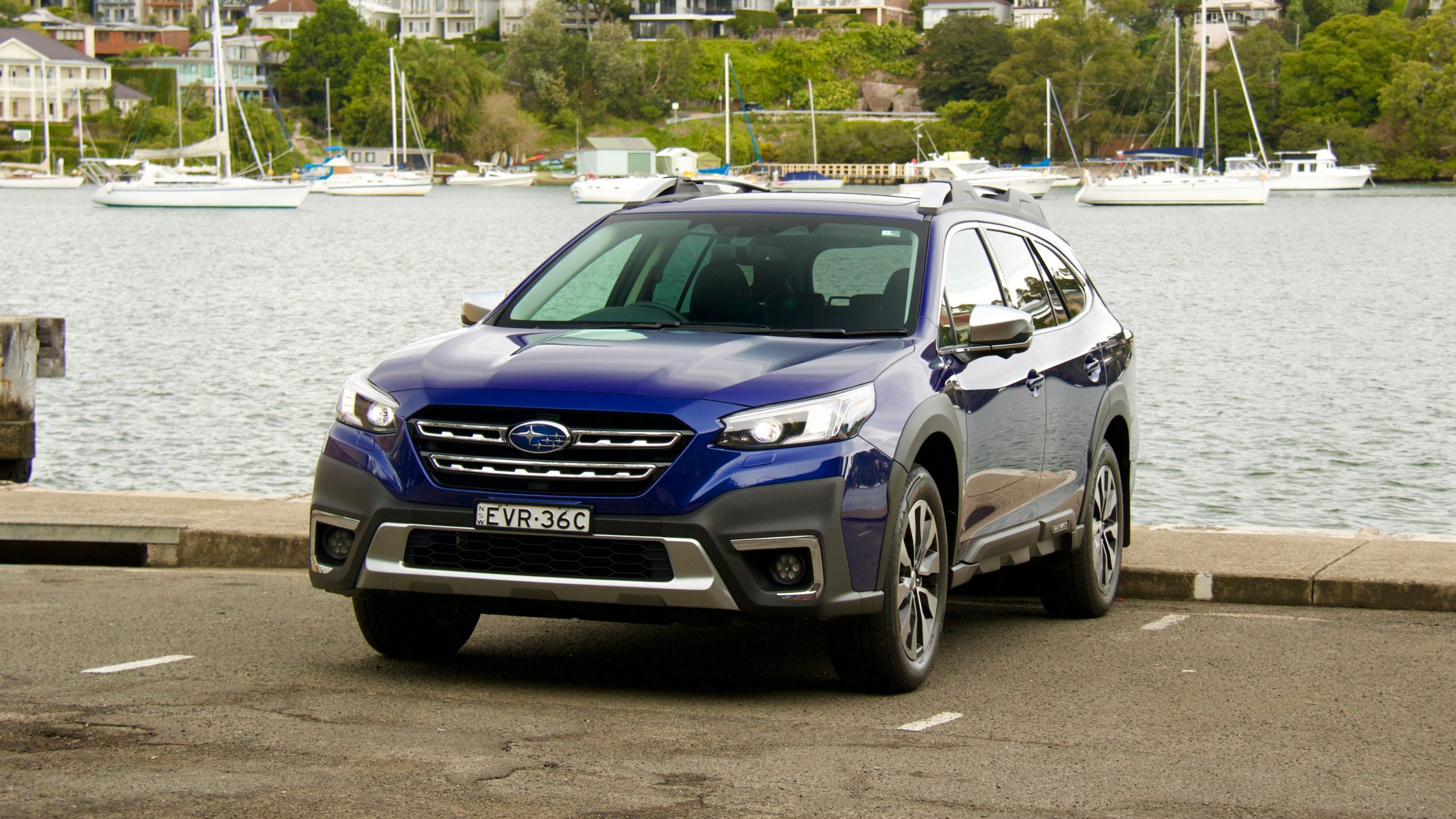
Why is the Outback an imposter? Just look at it: despite being classified as a large SUV, it’s not an SUV. It’s actually a lifted wagon and in our opinion, it’s all the better for it. Even though the Outback sadly killed the Liberty wagon that it used to be based off, we still think that wagons are far superior to SUVs and the Outback is one of the best examples of a wagon on the new car market.
Price & Equipment: 8.5/10
While the regular Outback is priced from around $47,500 drive away, the 2023 Subaru Outback Touring XT we tested sits at the other end of the range and is priced from $55,990 plus on-road costs (or around $62,000 drive away).
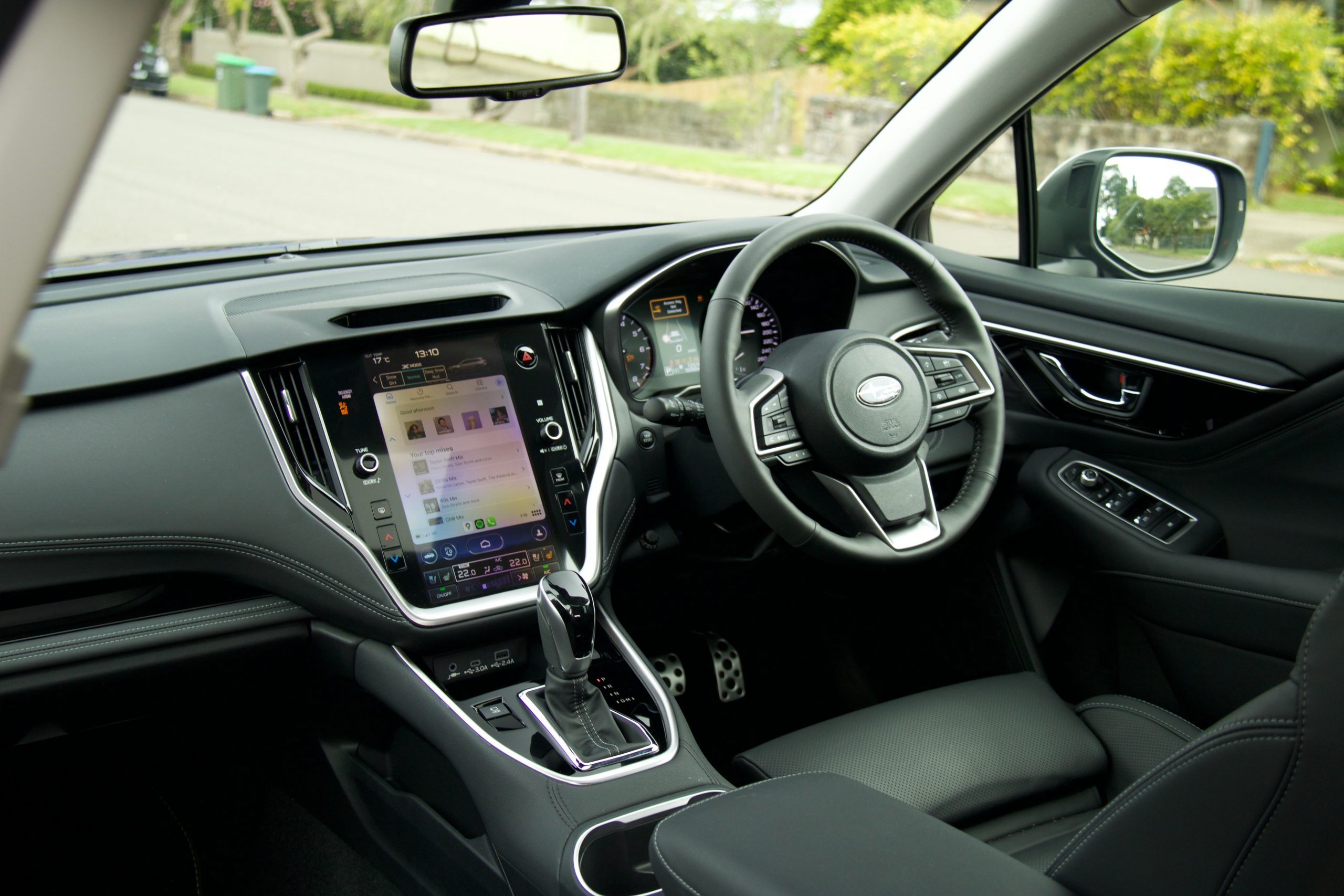
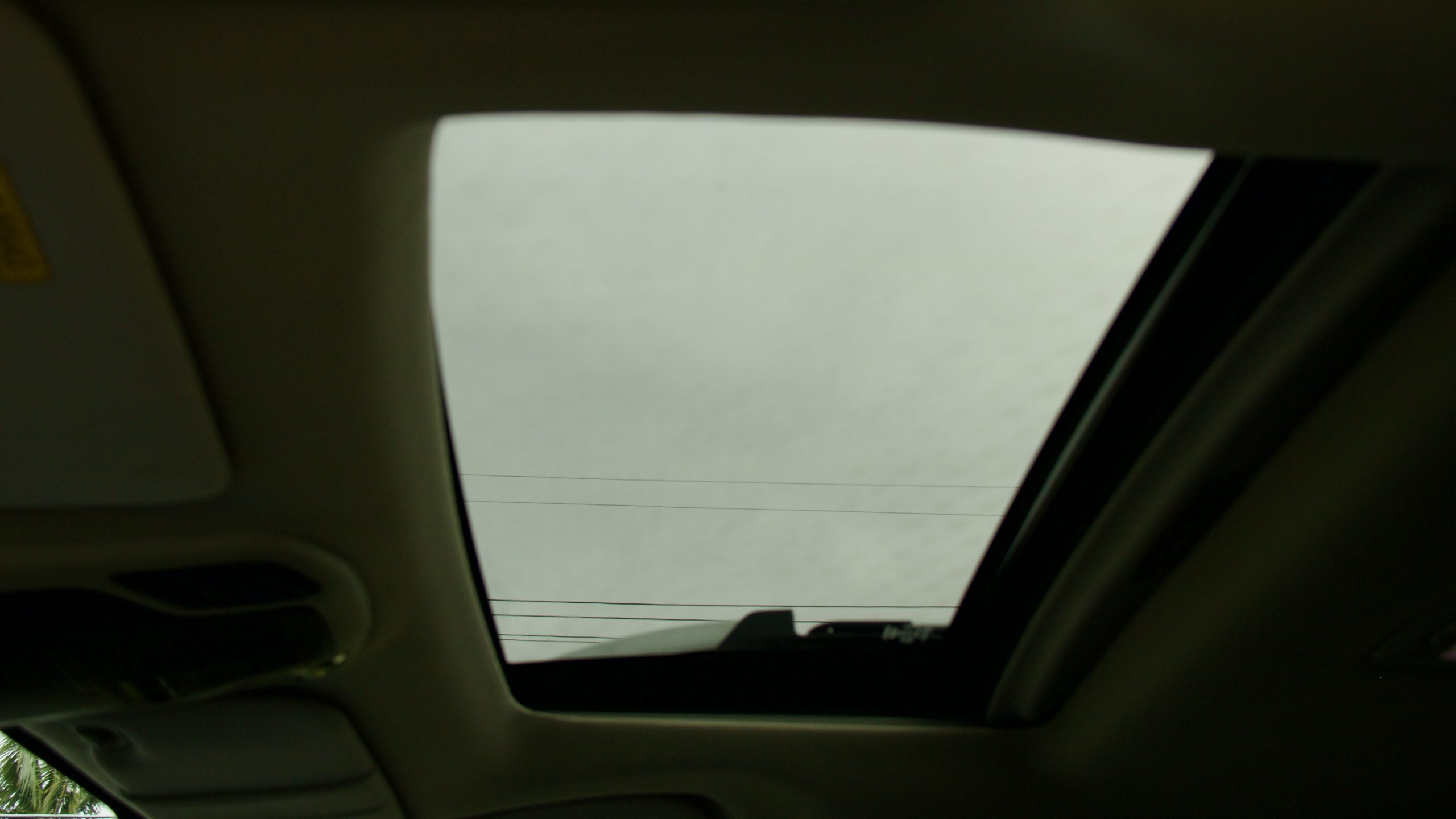
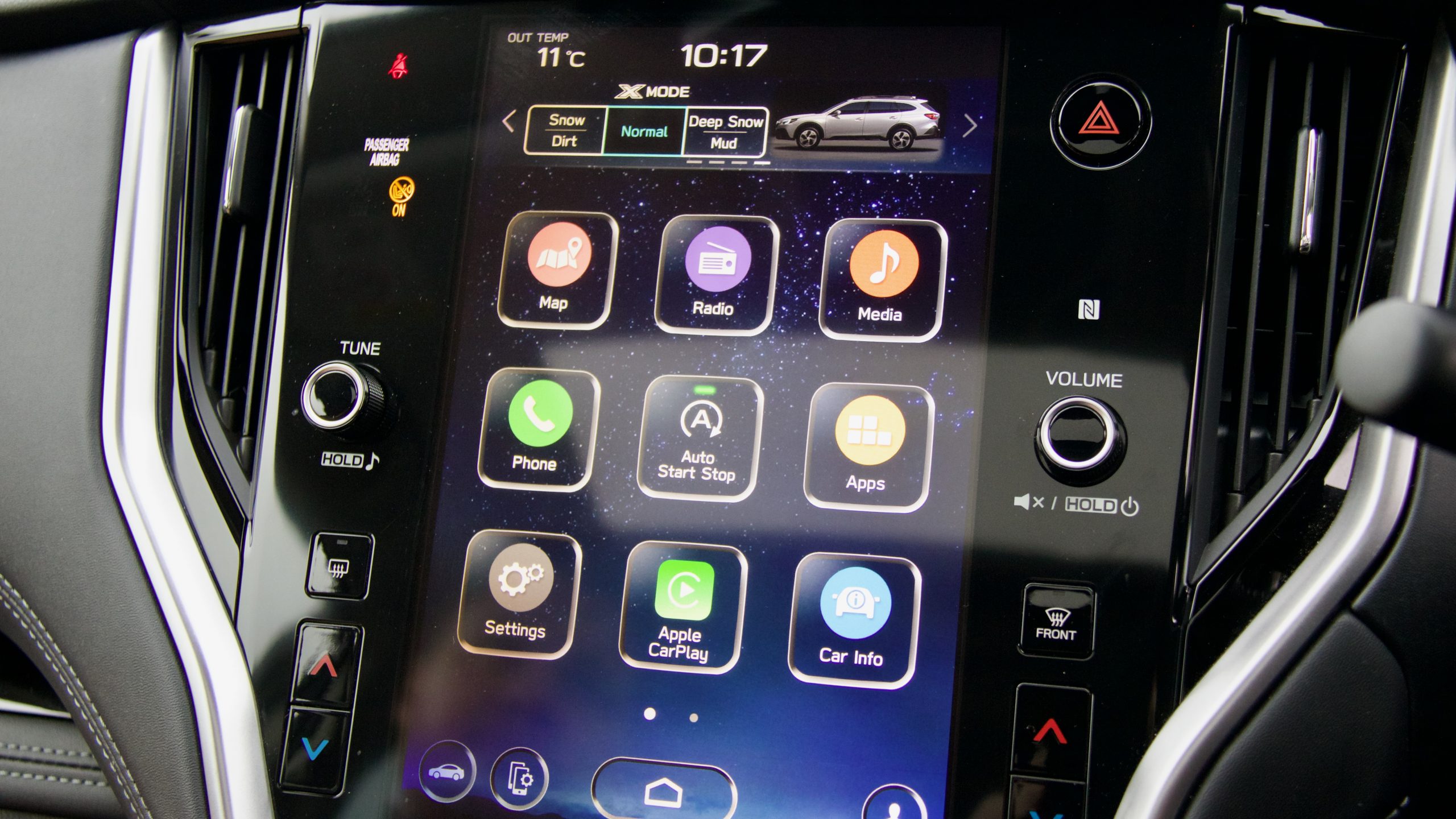
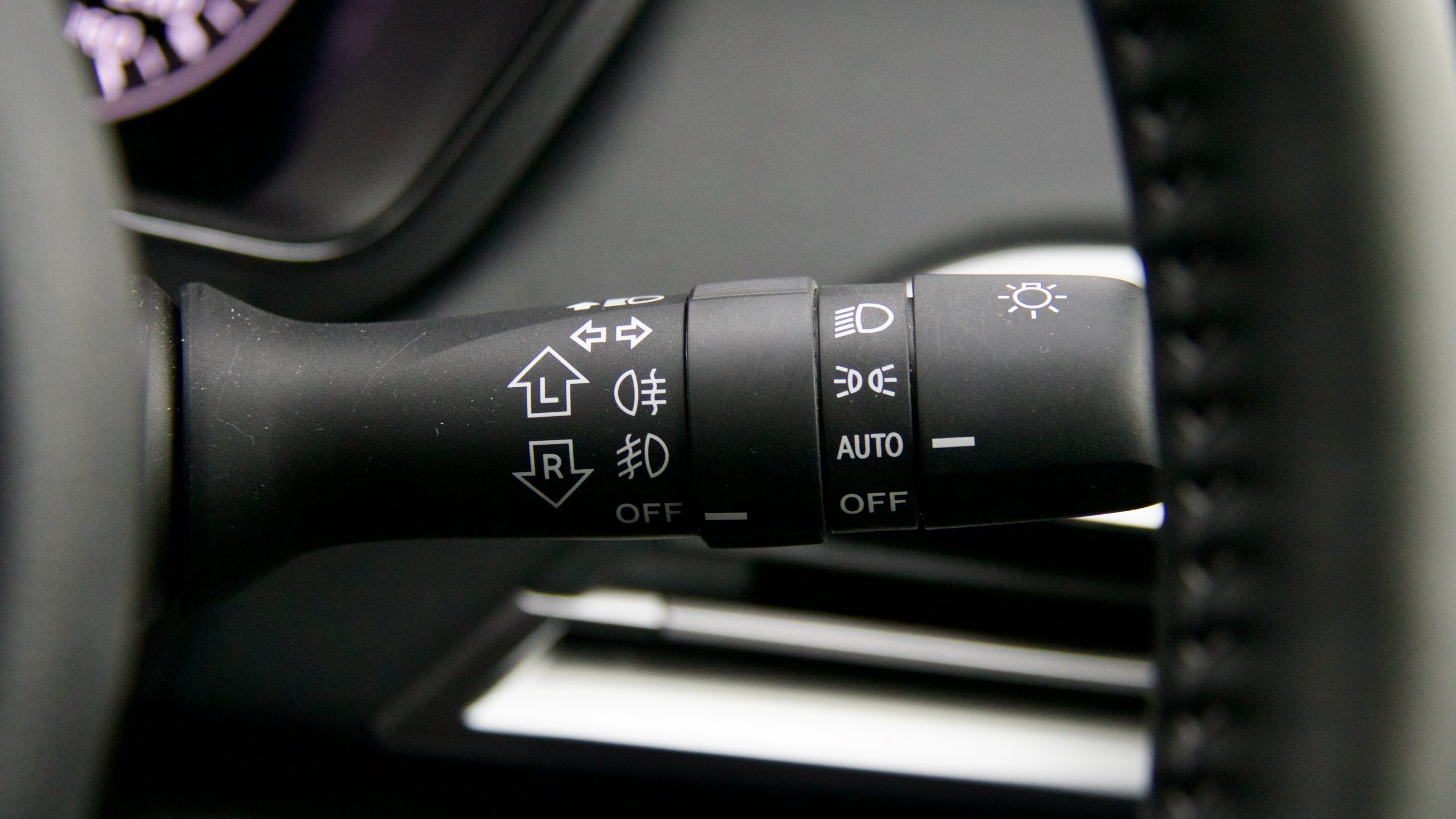
Standard equipment on the top-spec Outback Touring XT includes 18-inch alloy wheels, dusk-sensing automatic LED headlights, automatic wipers with a front de-icer, roof rails with integrated cross bars, rear privacy glass, keyless entry and start, a hands-free electric tailgate, a sunroof, heated and auto-folding mirrors with an auto-dropping passenger mirror in reverse, Nappa leather upholstery with a 10-way electric driver’s seat with a manually extendable seat base and two-position memory, driver monitoring with automatic seat and exterior mirror adjustment, an eight-way electric front passenger seat, heated and ventilated front seats, heated and reclining rear seats, a heated leather-wrapped steering wheel, dual-zone climate control with rear air vents, an 11.6-inch touchscreen with wireless Apple CarPlay and Android Auto, satellite navigation, digital radio, a CD player, a nine-speaker Harman Kardon sound system, selectable driving modes including ‘X-Mode’ off-road modes and four USB charging ports.
Safety equipment includes seven airbags, auto emergency braking (AEB) with pedestrian and cyclist detection with auto emergency steering, lane departure warning with lane keep assist and lane trace assist, blind-spot monitoring, front and rear cross-traffic alert, rear automatic braking, driver attention monitoring, traffic sign recognition, adaptive cruise control with stop and go functionality, an intelligent speed limiter, front and rear parking sensors and front, rear and left-hand side cameras. The Outback earned a five-star ANCAP safety rating in 2021.
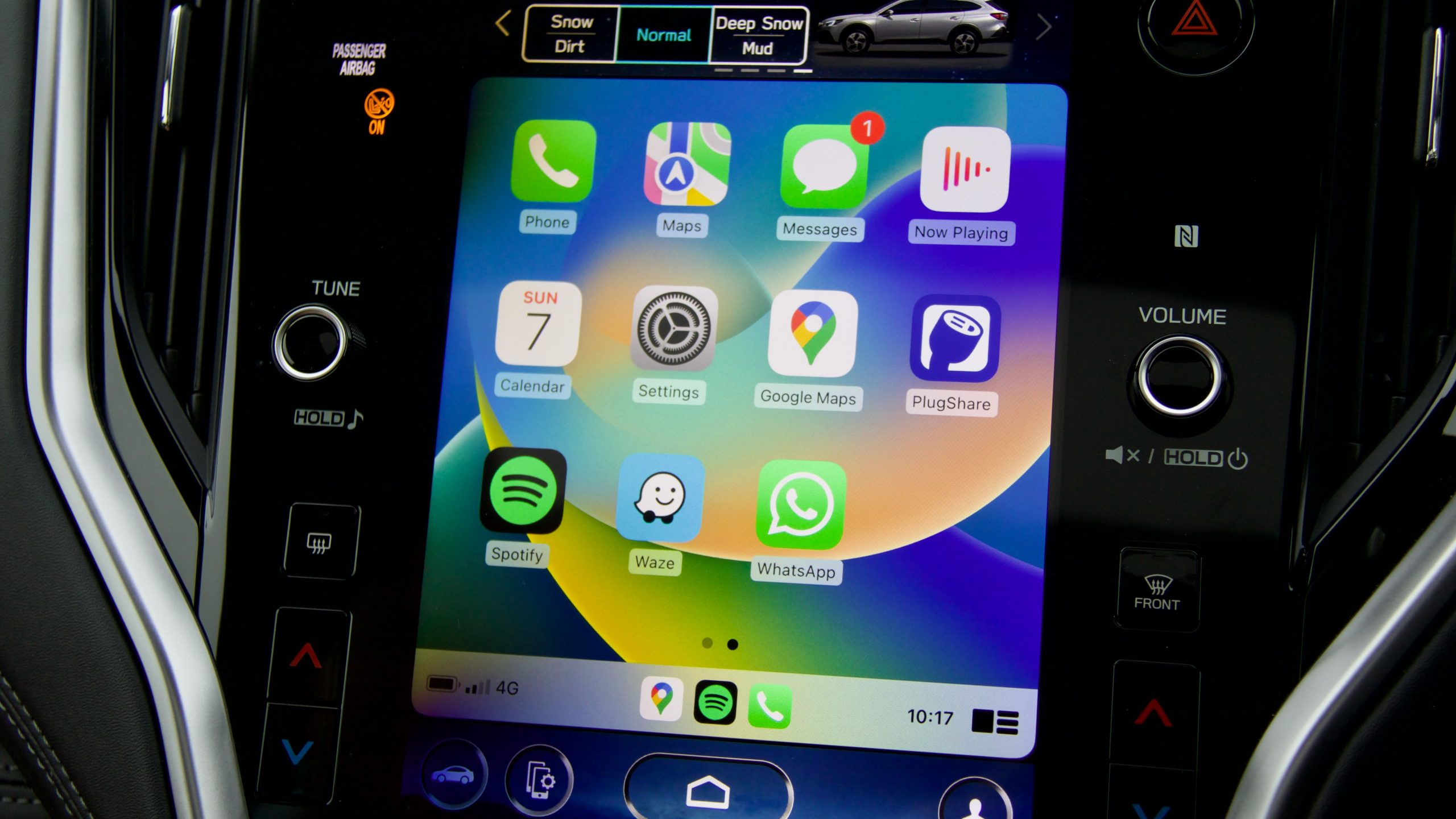
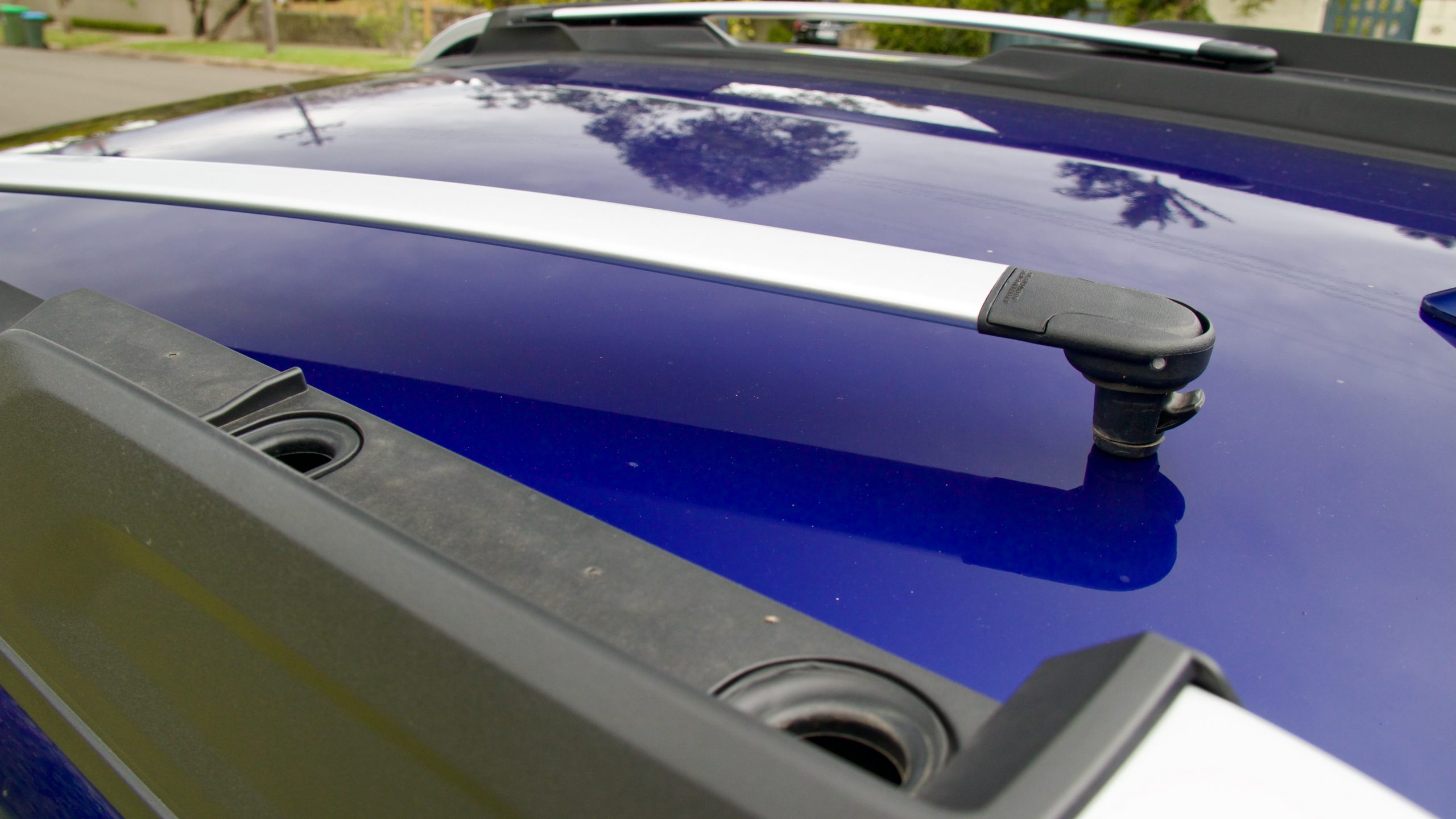
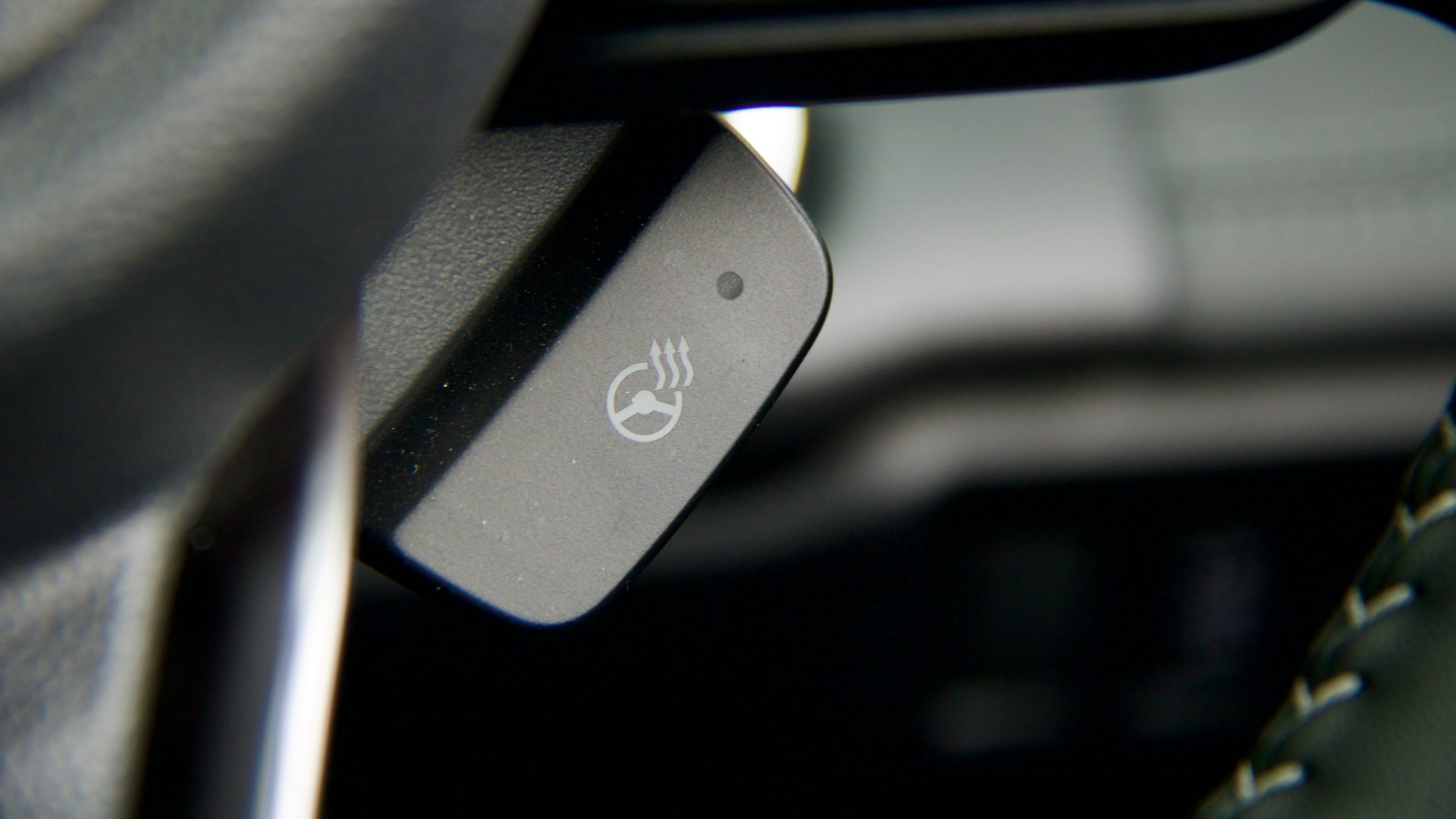
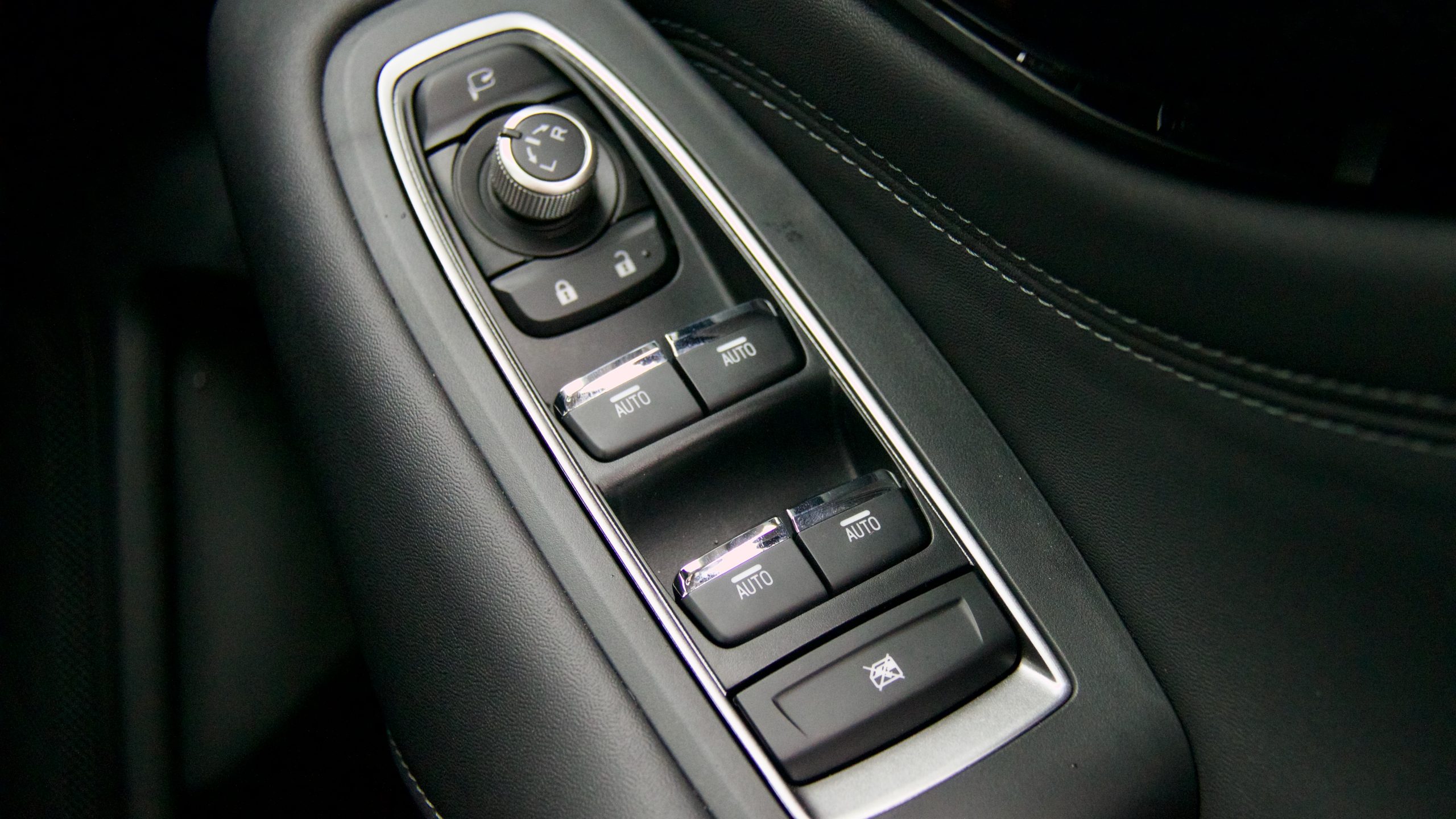
Colour options for the Outback Touring XT include ‘Crystal White Pearl’, ‘Ice Silver’, ‘Brilliant Bronze’, ‘Crimson Red’, ‘Storm Grey’, ‘Autumn Green’, ‘Sapphire Blue’, ‘Magnetite Grey’ and ‘Crystal Black’. We love that no colour costs extra as they’re all included in the price. Black and cream are the interior colour options – the tan option from the naturally aspirated Touring is strangely not available on the turbo.
We don’t think that the Outback Touring XT lacks for equipment at all but we’d like to see features such as a 360-degree camera, a heads-up display, a wireless phone charger, integrated rear door sunshades, tri-zone climate control, live services like live traffic for the navigation system and a digital driver’s instrument cluster added.
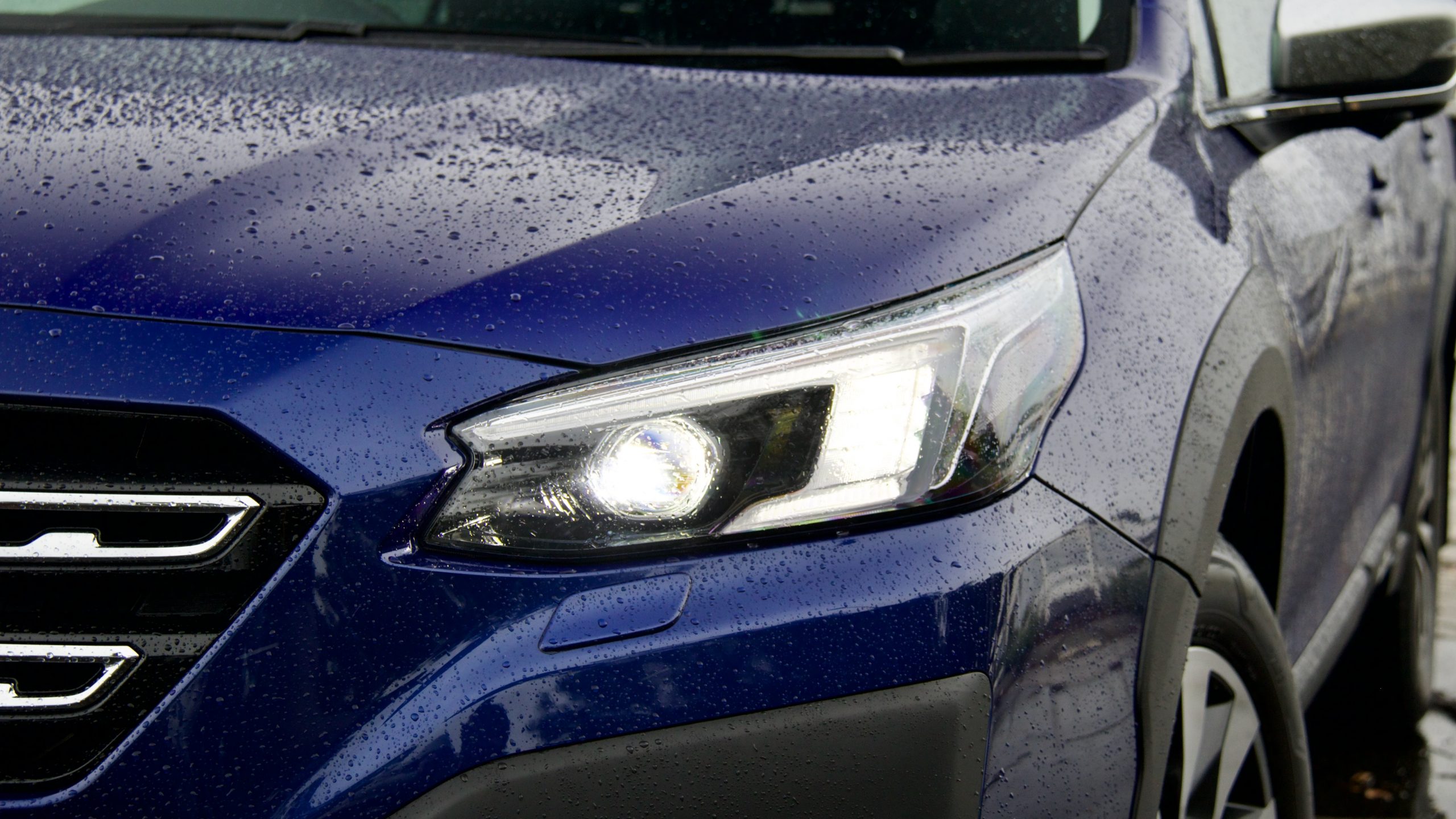
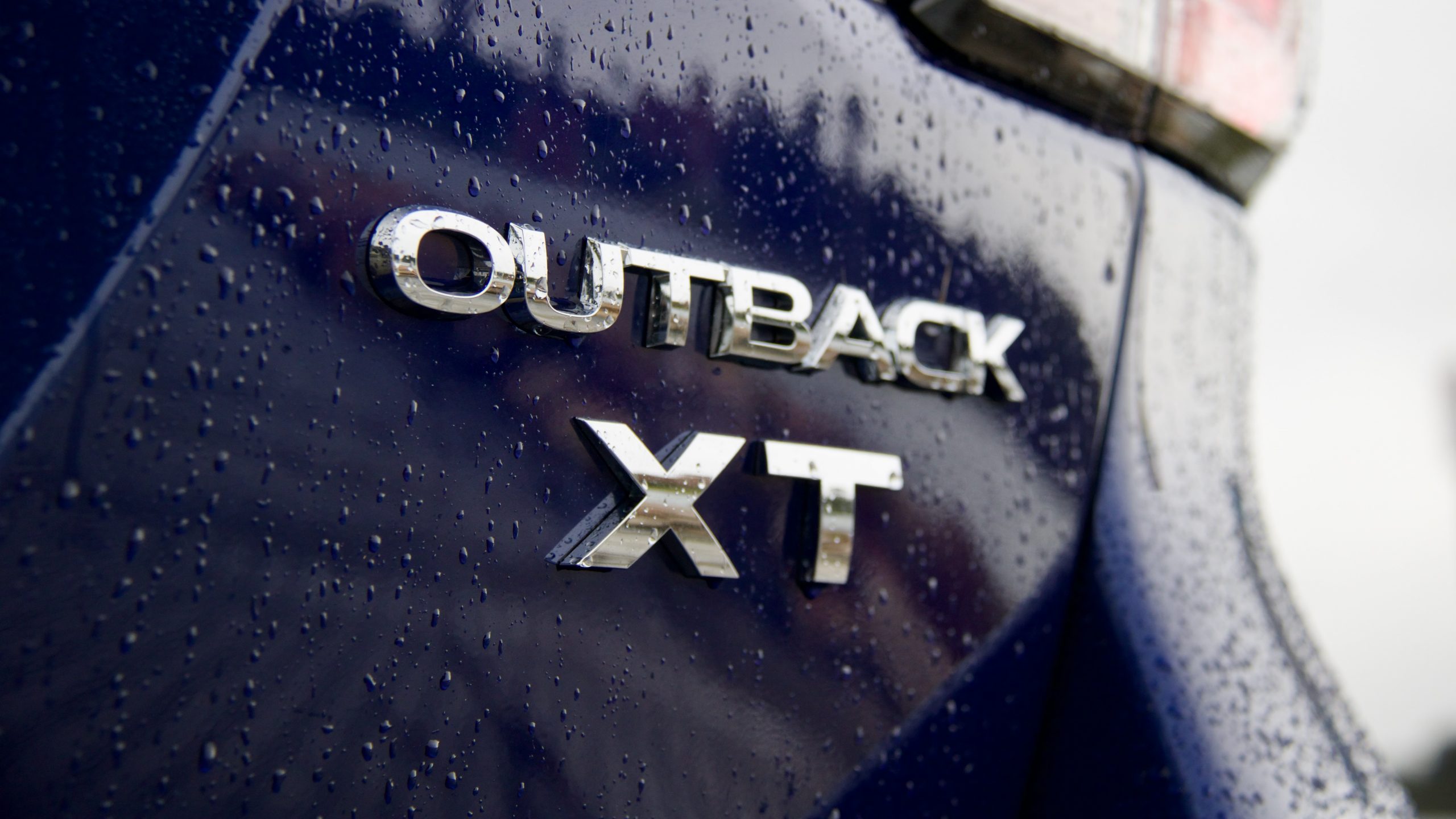
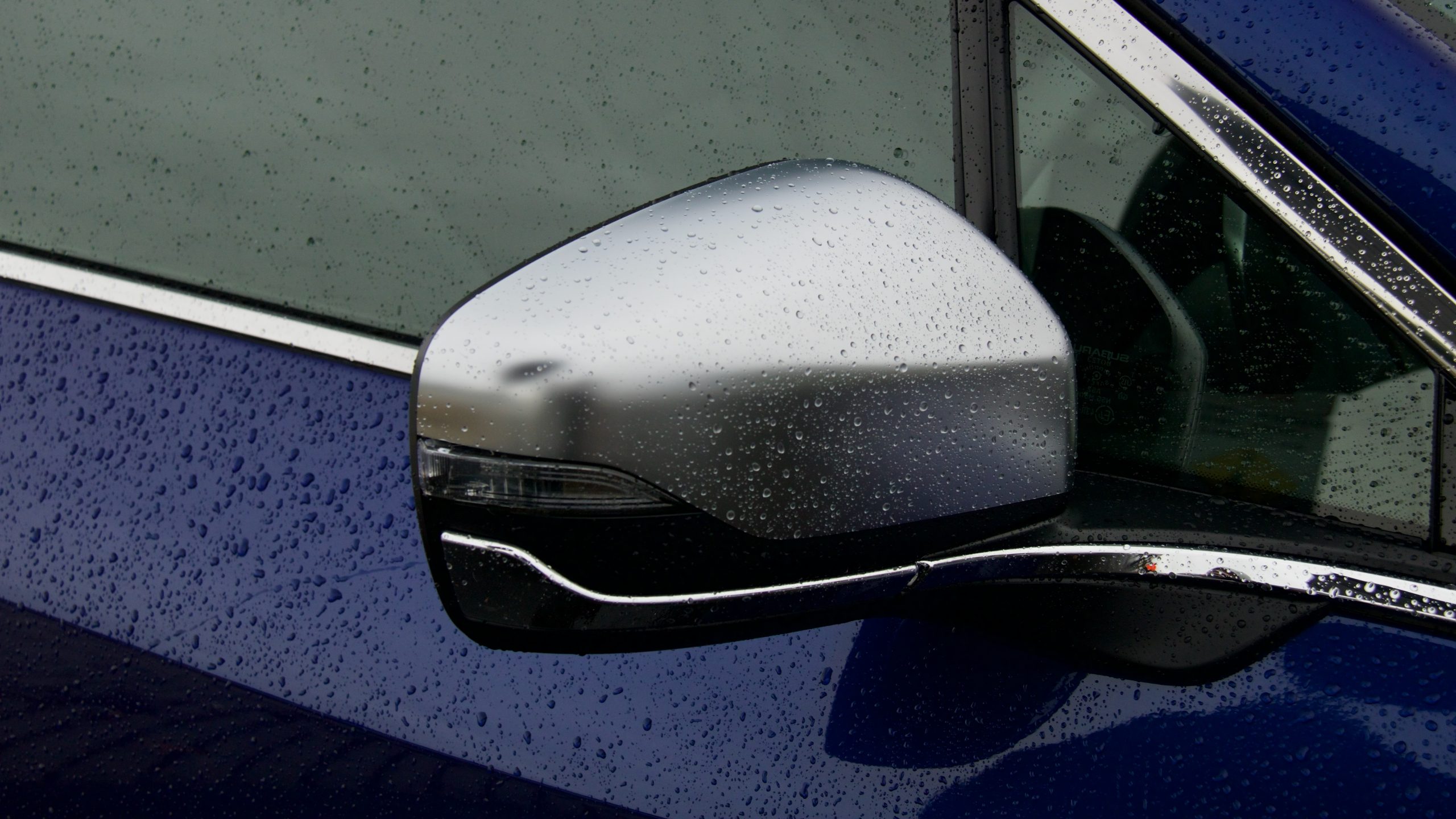
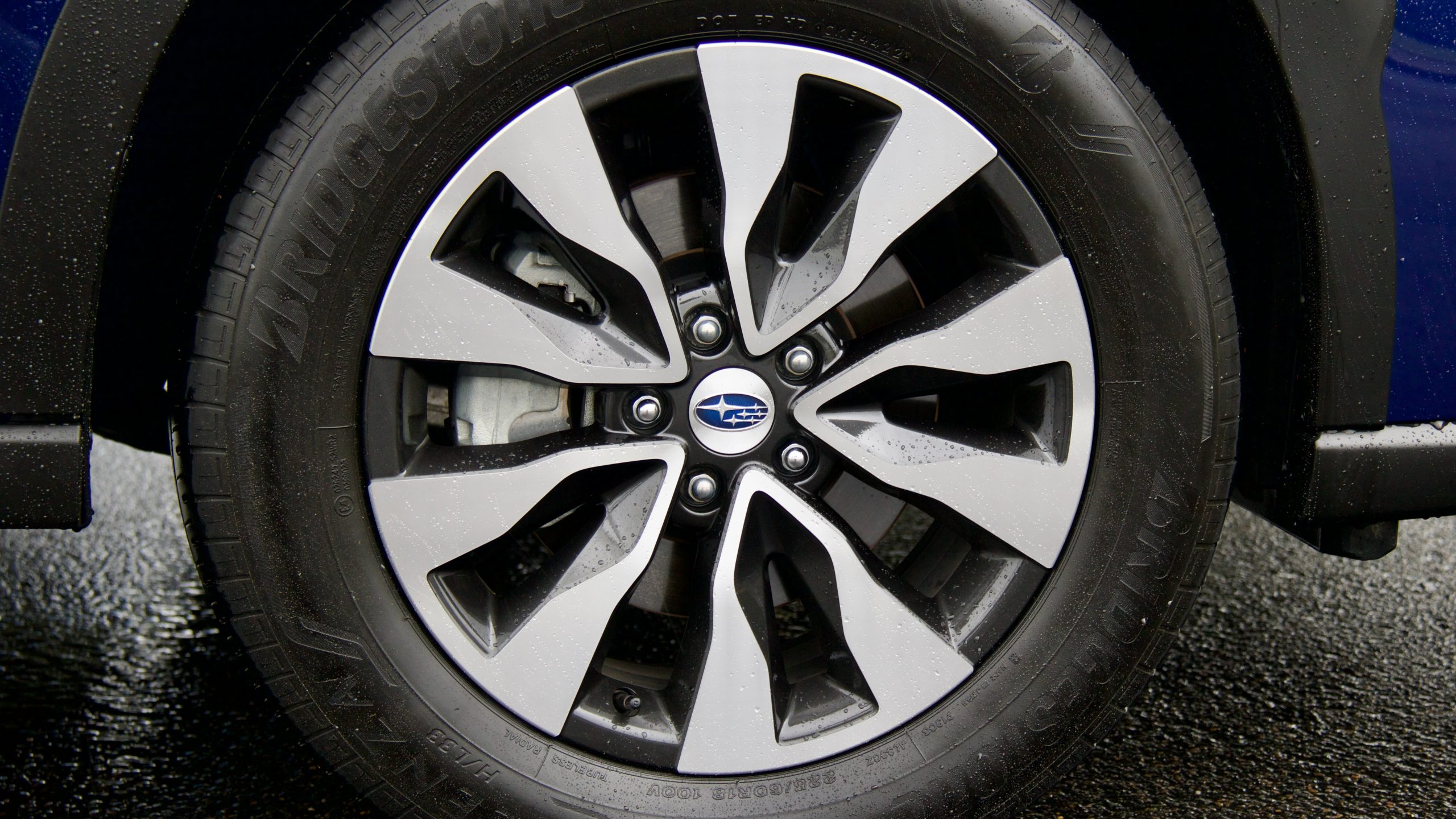
While wagon popularity has lessened in recent years, there are still a number of options available on the market, including the Skoda Octavia and Superb, Peugeot 308 and 508, Volkswagen Golf, Passat and Arteon Shooting Brake, Subaru’s own WRX Sportswagon and the Volvo V60 Cross Country. We think the main competitor to the Outback Touring XT is the Volkswagen Passat Alltrack 162TSI Premium, which is priced from around $69,500 drive away, and like the Outback, it’s lifted and looks more like an SUV thanks to its body cladding.
The Passat Alltrack is a significant $7,500 more expensive than the Outback Touring XT, and adds rear side airbags, tri-zone climate control, a bigger sunroof, a digital instrument cluster, a proper 360-degree camera, automatic parking, adaptive dampers and 64-colour selectable LED interior ambient lighting. The less expensive Outback counters with a larger centre screen, a wider range of monitoring for the auto emergency braking system (including cyclist and intersection assist), a front wiper de-icer, moveable roof cross bars, heated rear seats and a heated steering wheel.
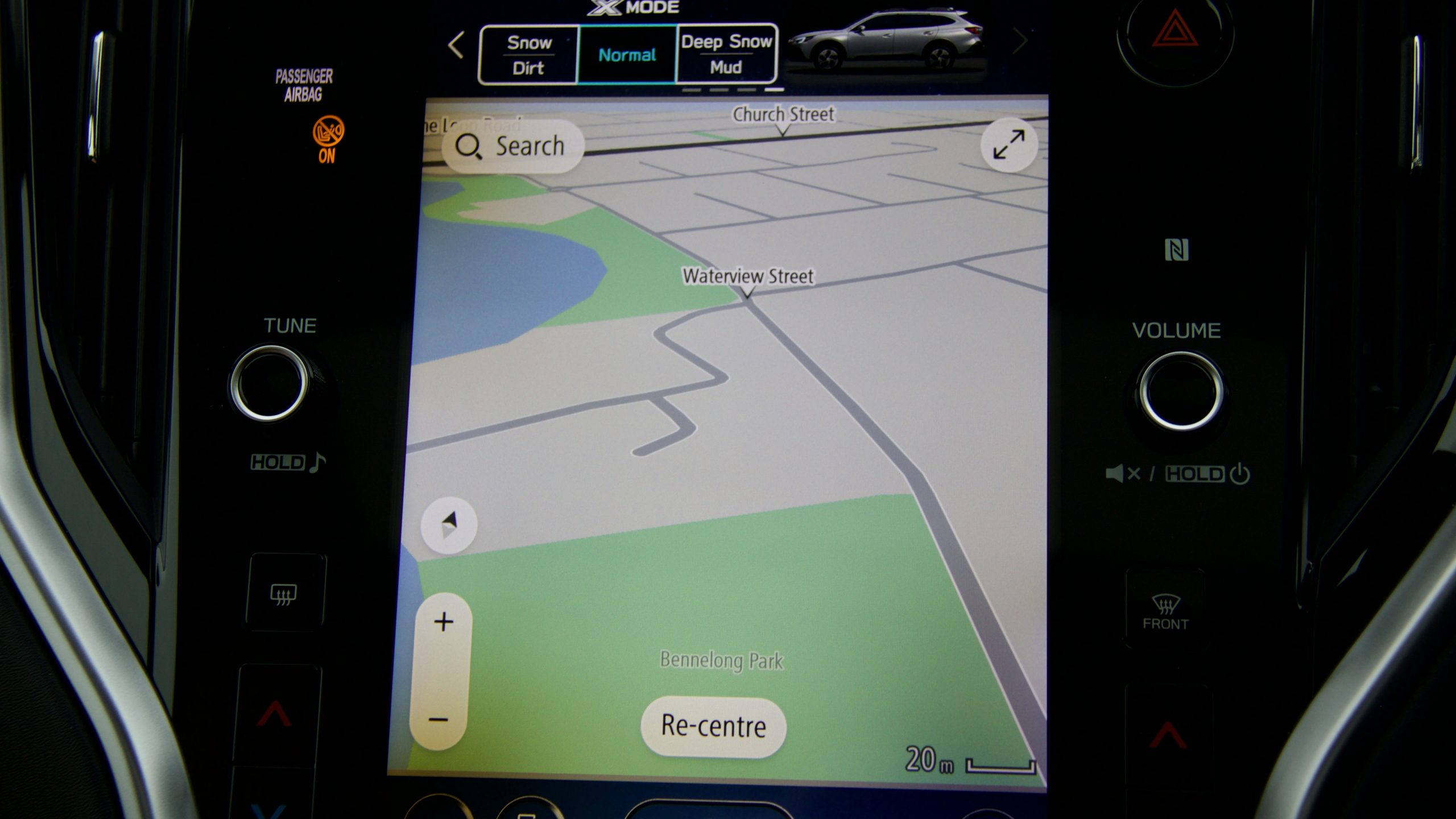
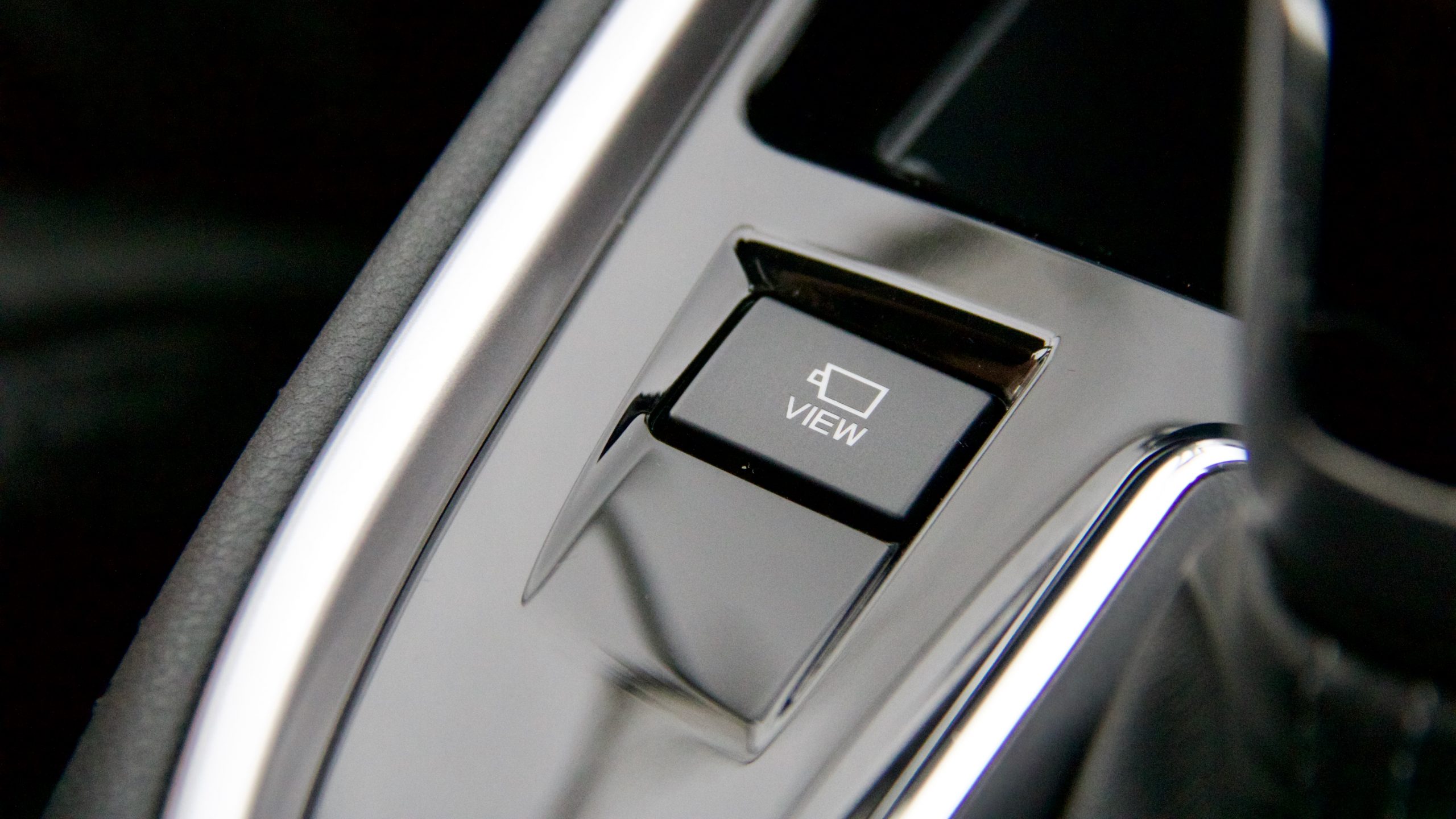
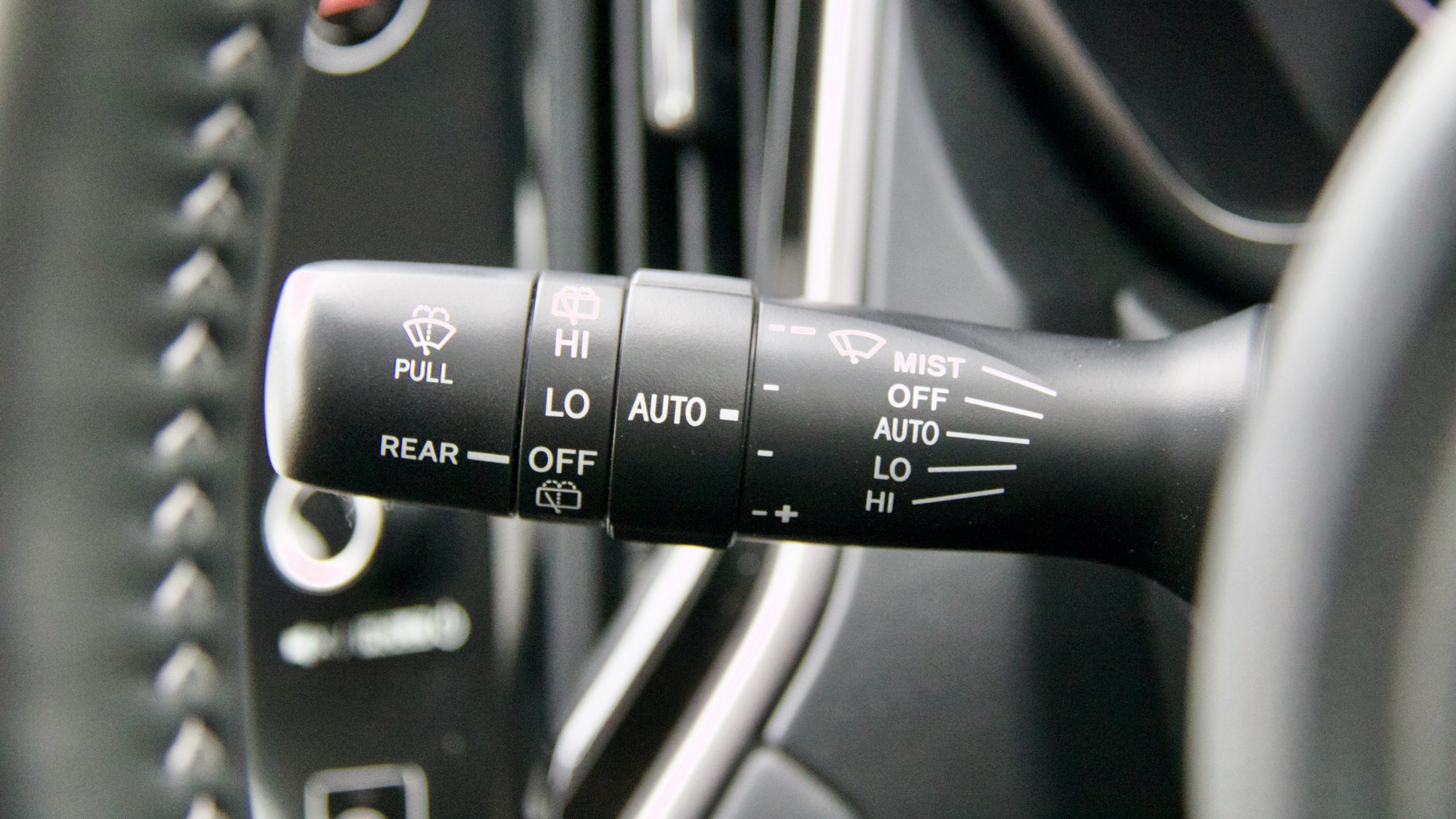
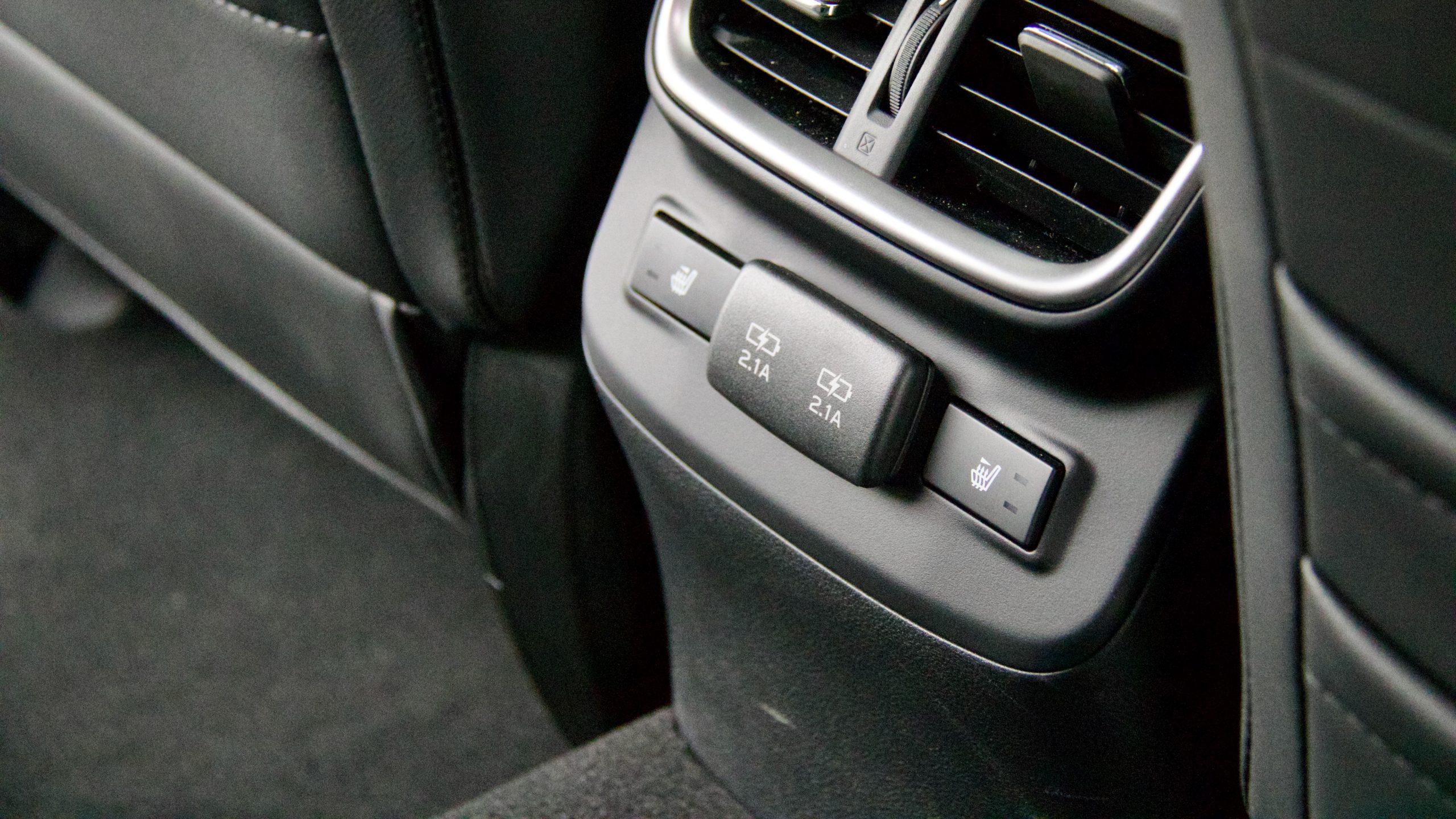
Even compared to a regular mid-size SUV rival like the Mazda CX-5 G35 Akera, which costs just shy of $60,000 drive away, the Outback presents good value for money thanks to its similar grunt but slightly more equipment and more interior space.
Performance & Economy: 8/10
While the regular Outback features a 138kW/252Nm 2.5-litre naturally aspirated four-cylinder petrol engine, the new engine in XT models is essentially the same engine in the WRX: a 2.4-litre turbocharged four-cylinder petrol engine that makes 183kW of power (at 6,000rpm) and 350Nm of torque (between 2,000rpm and 4,800rpm). It’s mated to a CVT automatic transmission with stepped ratios and Subaru’s famed symmetrical all-wheel drive system. Subaru doesn’t claim a 0-100km/h sprint time but some overseas testers have recorded runs in as little as just over six seconds – significantly faster than the 2.5-litre petrol model, which does the same in just under 10 seconds.
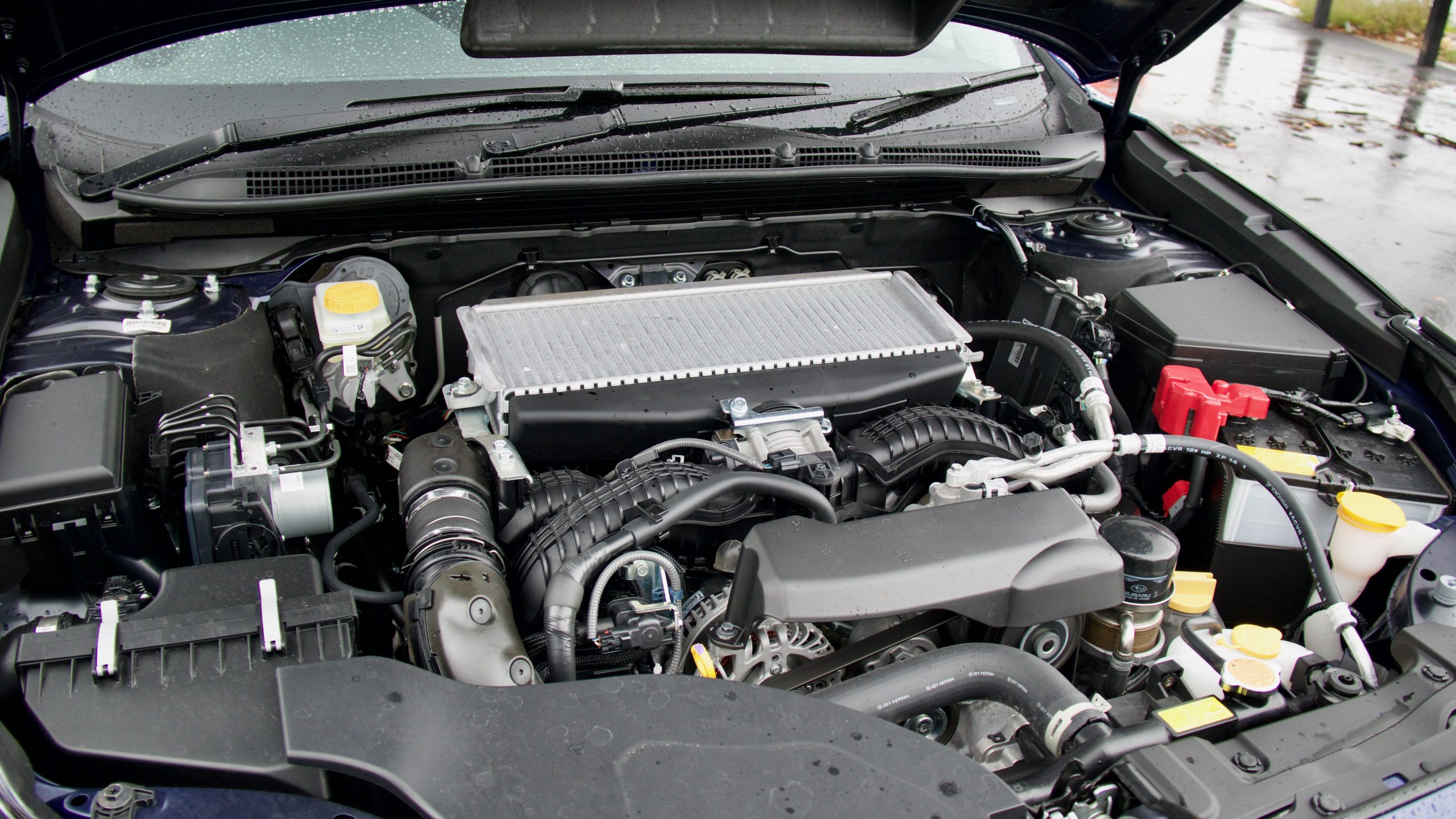
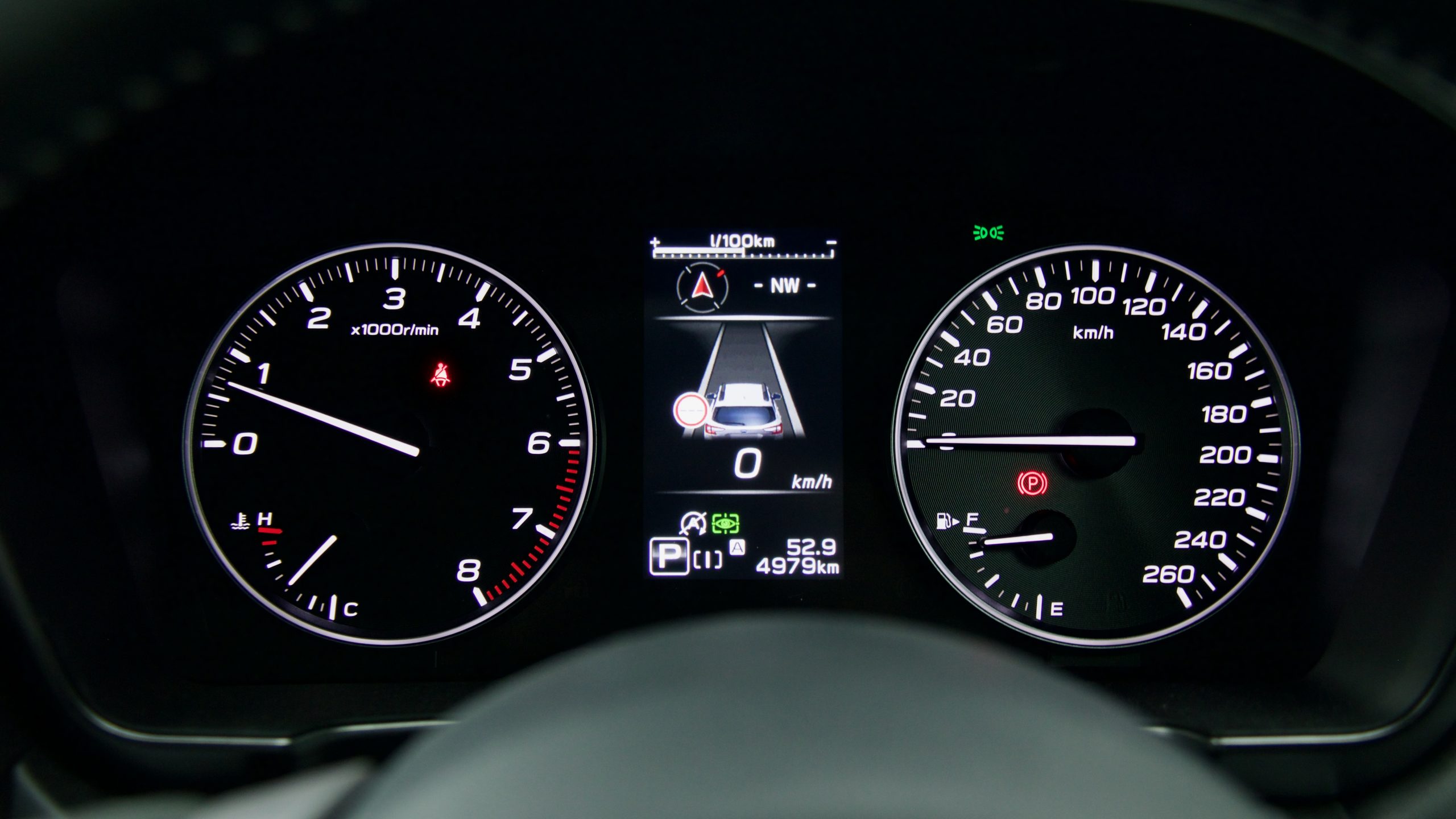
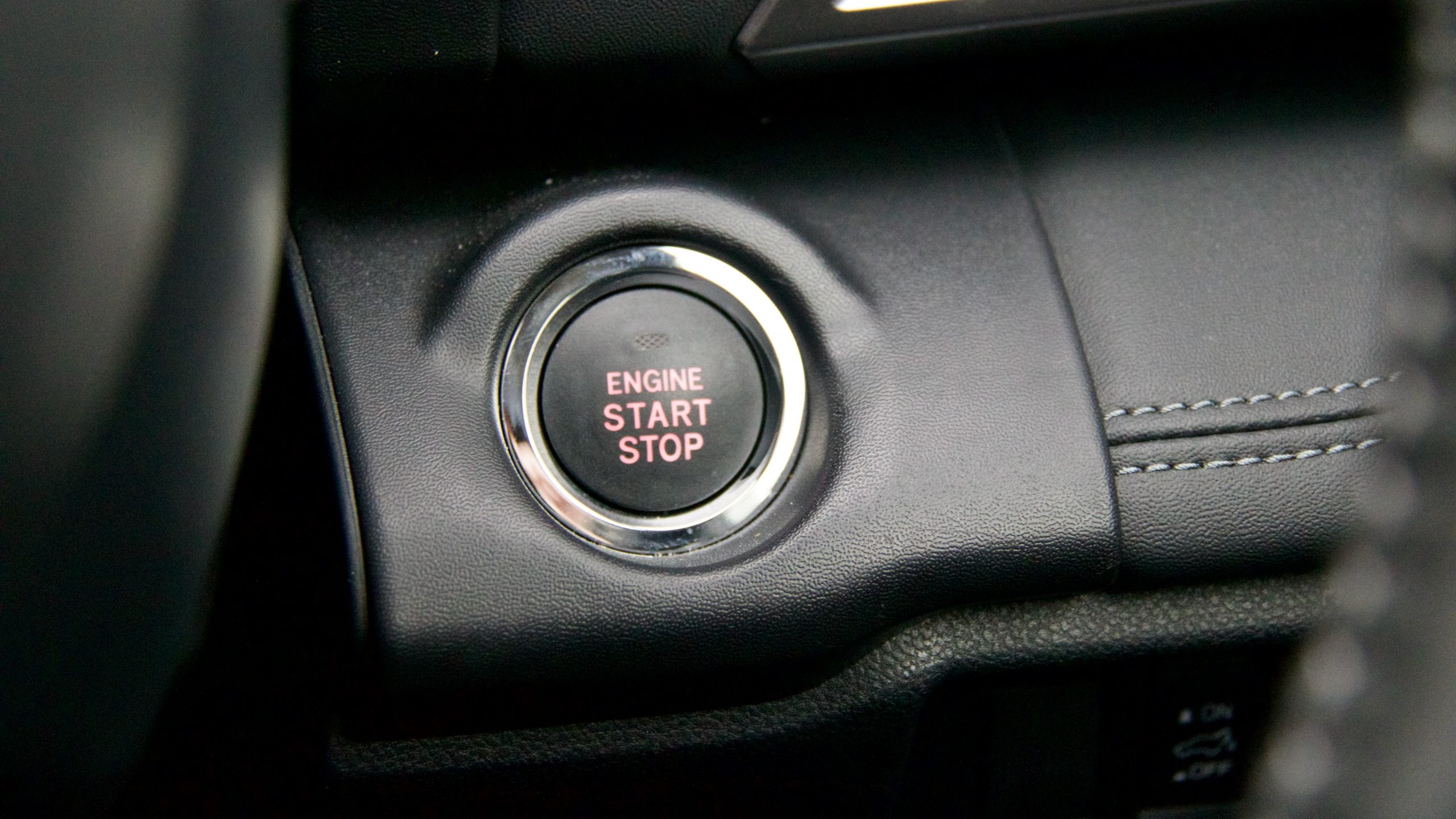
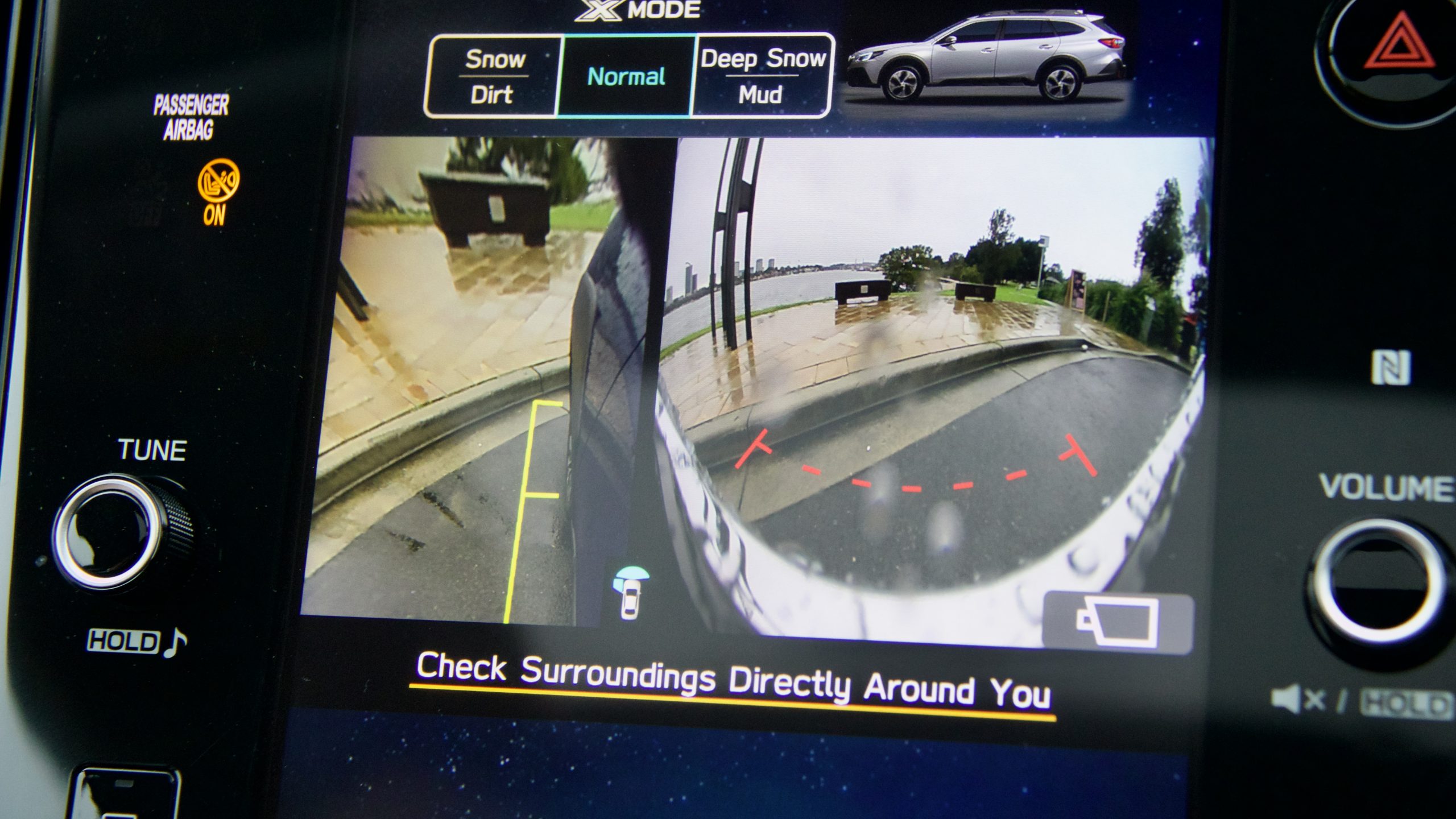
The turbocharged engine in the Touring XT doesn’t transform the Outback, but it does make it more drivable and gives it the grunt that we think is needed in the naturally aspirated models. Peak torque hits at just 2,000rpm, a full 1,400rpm lower than the naturally aspirated models – and it’s a full 105Nm more as well. But its relatively porky 1,770kg tare weight is also the 90kg more than the Passat Alltrack and combined with the Passat’s lightning fast DSG gearbox, makes the Alltrack feel quicker. But regardless, the extra grunt of the XT is welcome in the Outback range – the 2.5-litre petrol engine is fine but we miss the former diesel and six-cylinder engines from the previous shape model and the turbo engine adds the missing grunt.
The only available transmission is a CVT automatic that has stepped ratios, which is similar to the transmission in the naturally aspirated Outback but it has a lower gear ratio for better towing ability. Like most other CVTs, it’s different to a torque converter automatic in the way it performs when you floor the throttle – it strangely doesn’t flare the revs, but keeps them initially low to bask in the peak torque low in the rev range – but it’s better than a lot of other CVTs we’ve tested. Giving it a more normal feel is the ability to shift manually using the paddle shifters.
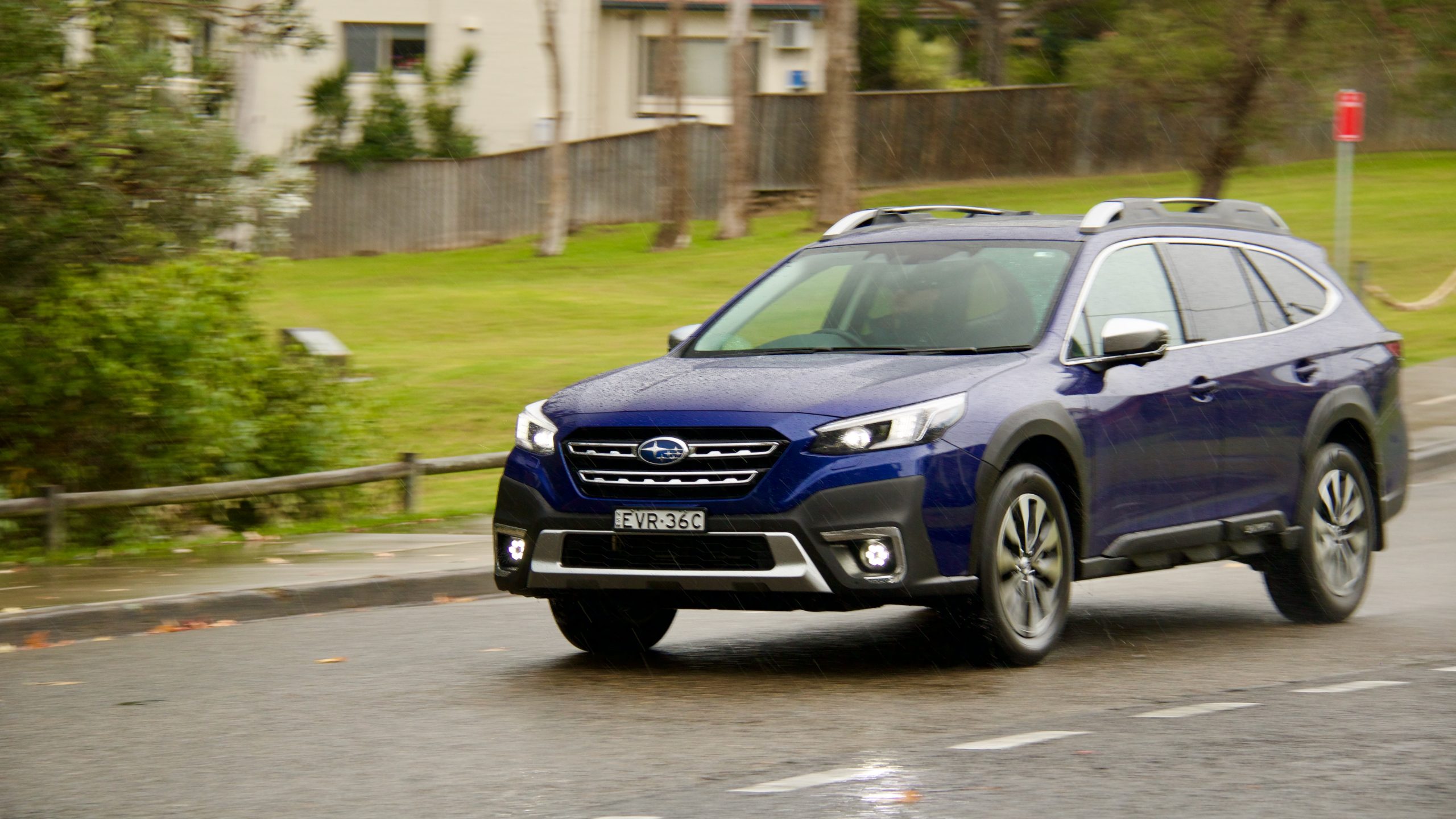
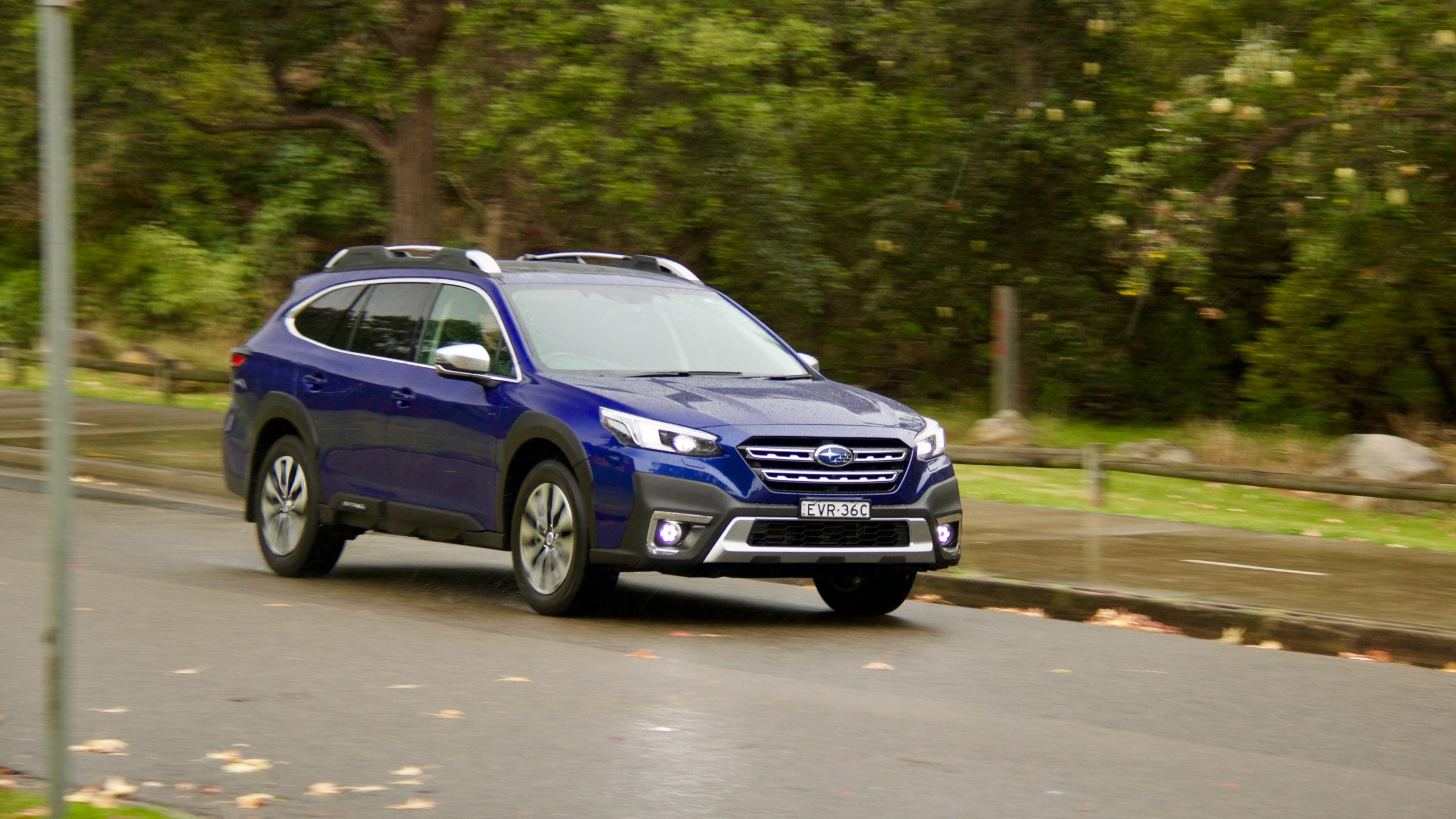
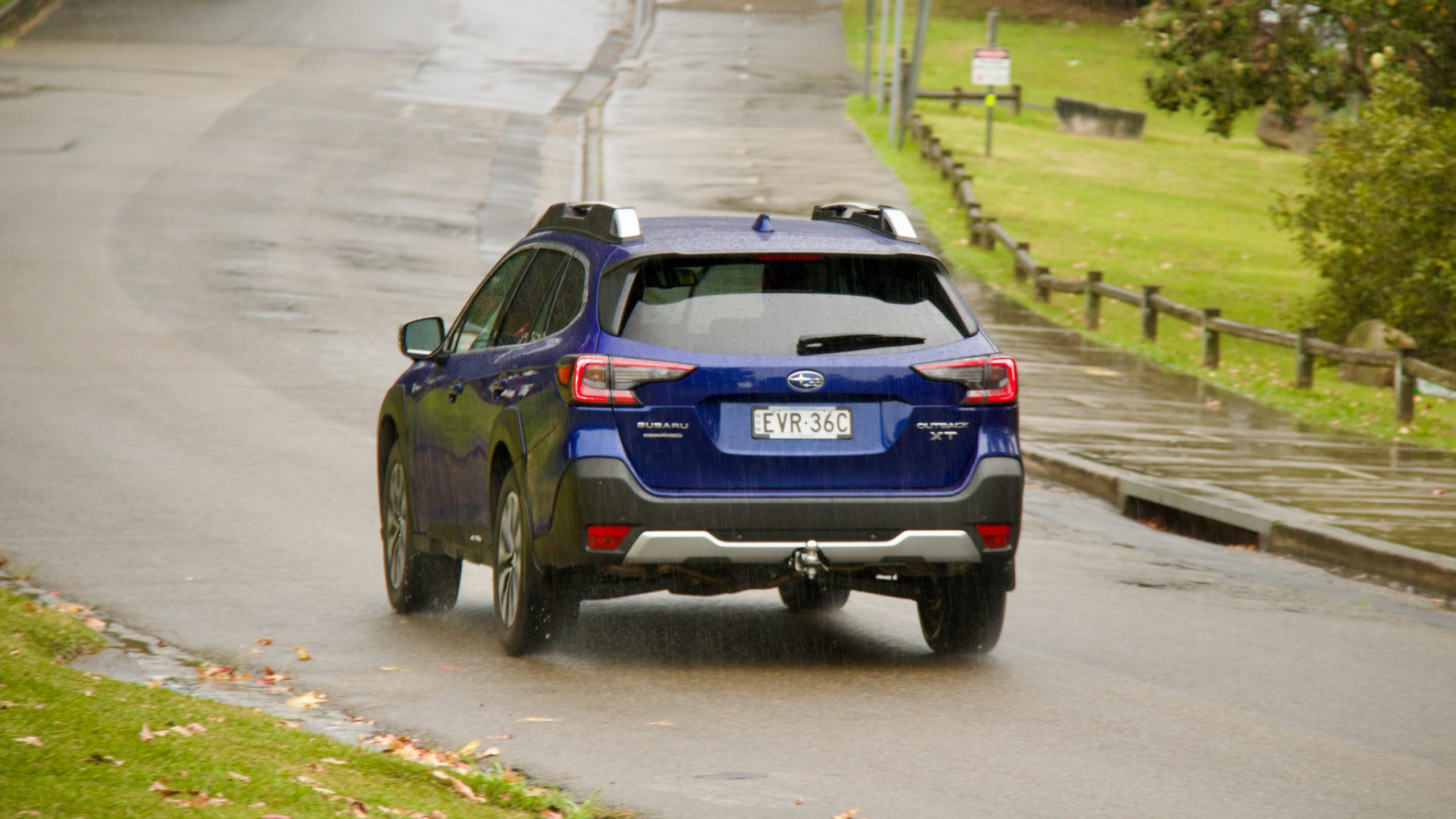
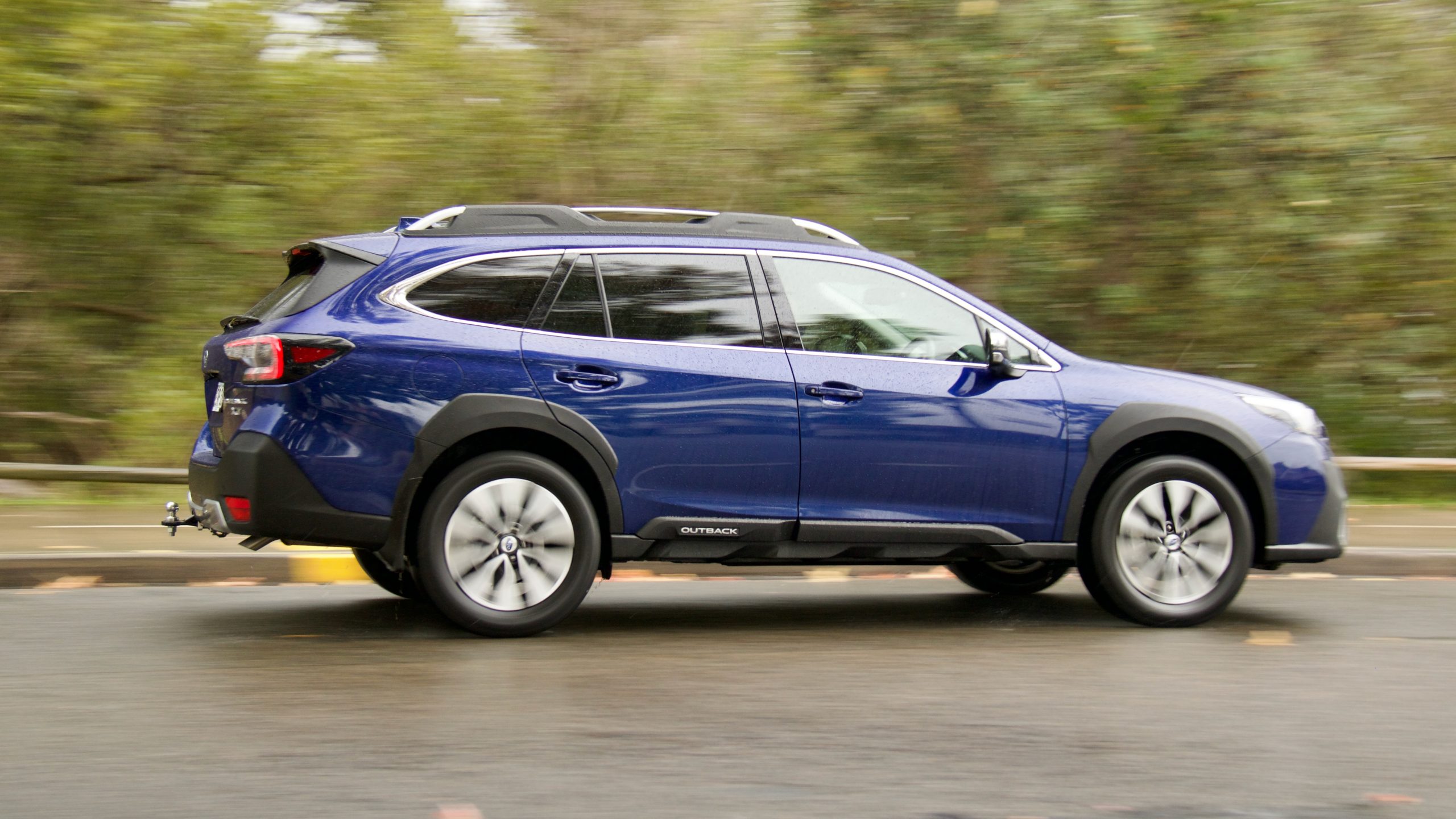
The claimed fuel consumption for the Outback Touring XT is 9.0L/100km with combined CO2 emissions of 204g/km versus 8.1L/100km and 186g/km for the Passat Alltrack Premium. In combined testing, we used 12.3L/100km – not great, but not too much more the naturally aspirated Outback. Turbo Outback models must use a minimum of 95RON premium unleaded fuel and have a 63-litre fuel tank.
Ride & Handling: 8/10
As we’ve previously discovered with the current-generation Subaru Outback, it drives well and is generally quite comfortable – for those wondering, the addition of the turbo does nothing to upset that balance. The suspension and damping has been changed slightly to account for the XT’s extra performance, weight of the turbocharged engine and that it’s likely to be towing more than the 2.5L Outback but it’s still an exceedingly comfortable car in a variety of conditions – almost like it was designed specifically for Australia, as its name suggests.
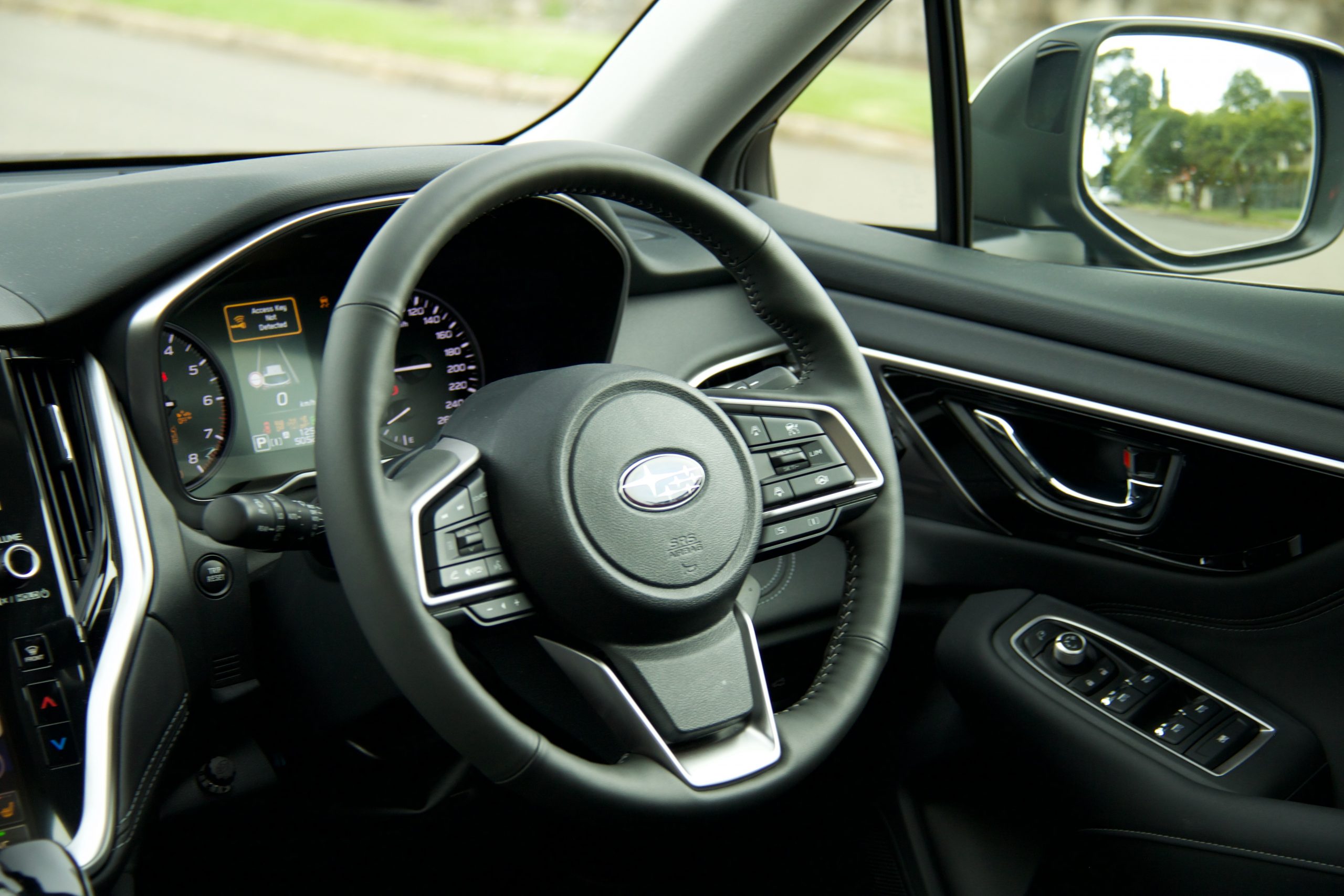
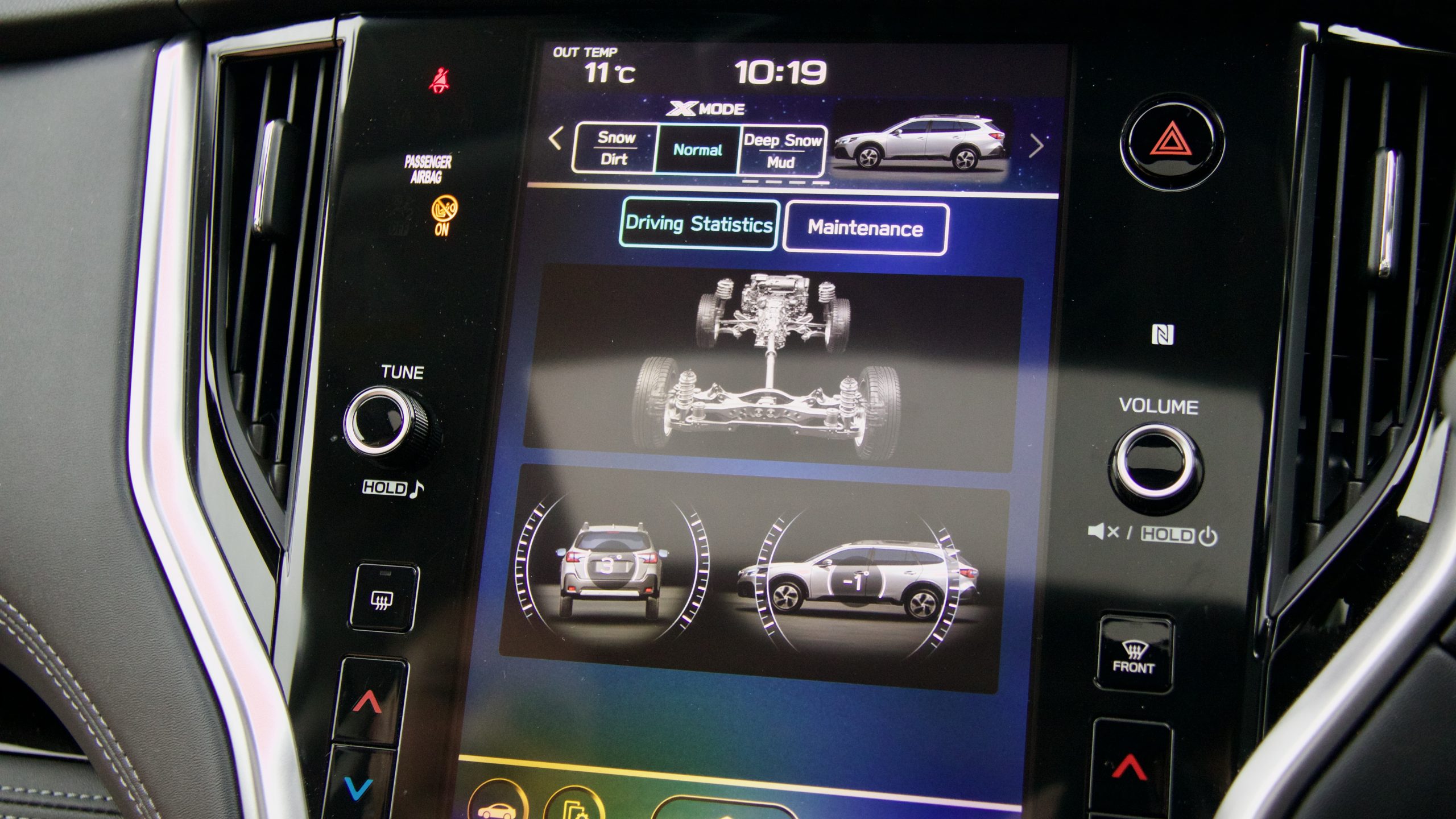
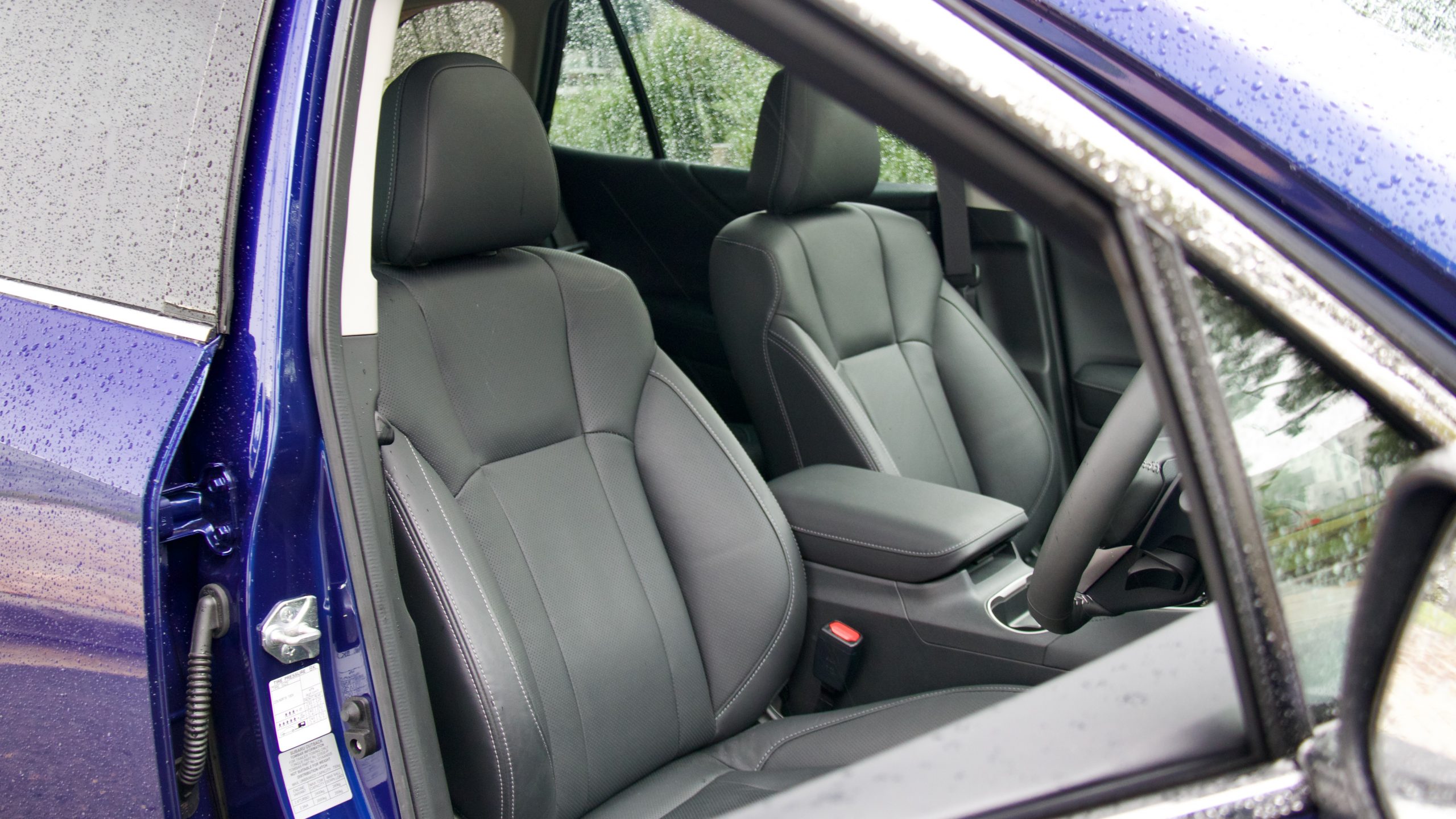
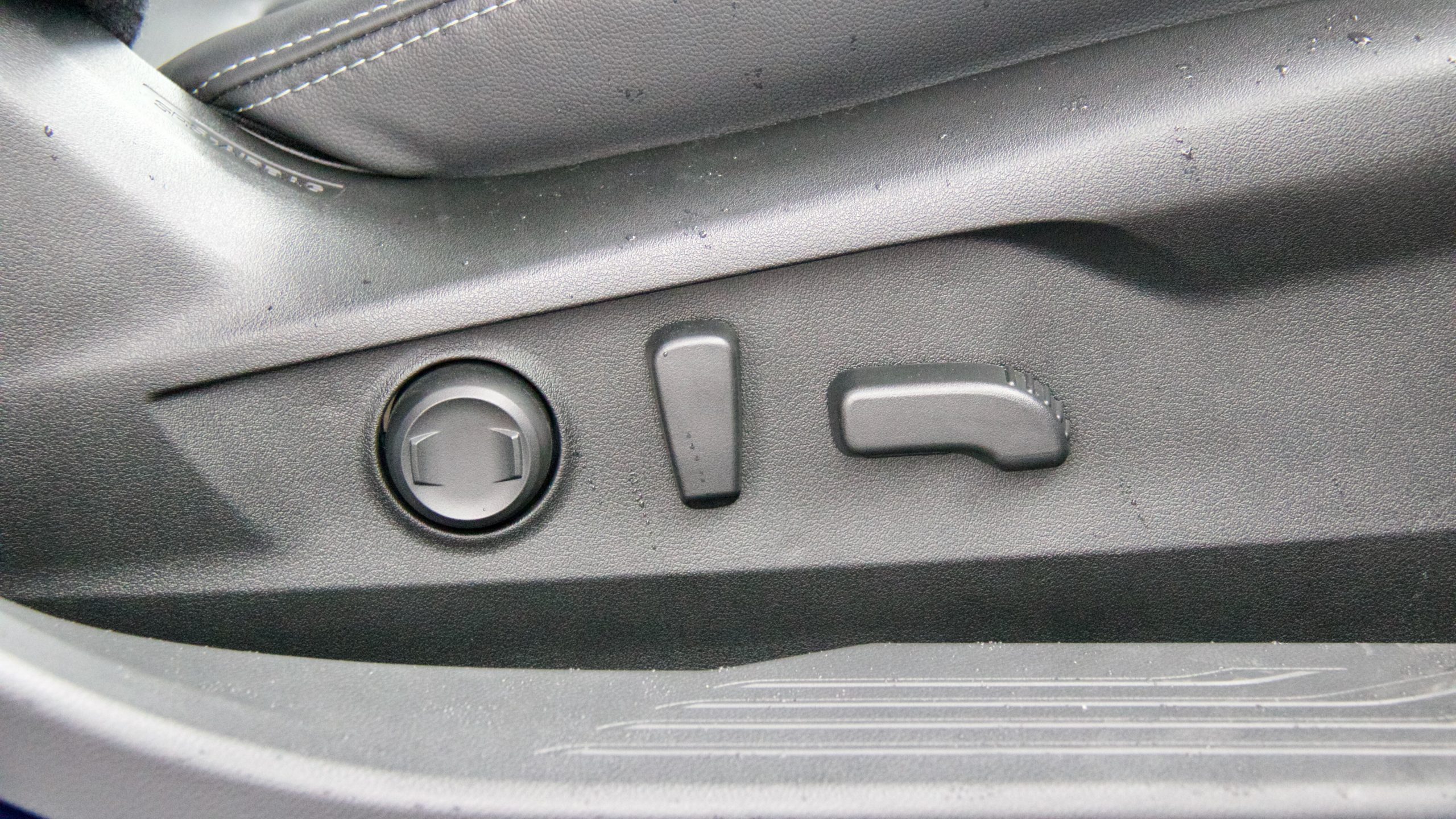
Sporty Outbacks of the past can be forgotten, however, as it has definitely moved away from Subaru’s former sporting image. It drives well compared to cars in the large SUV segment it competes with, but a Mazda CX-5 handles noticeably better with less body roll and more feelsome steering. But that’s fine as all-round comfort is now the Outback’s game and it excels at it – the Passat Alltrack is noticeably more athletic, if that’s what you’re after.
Elsewhere in the Outback’s driving experience is positive – the visibility is excellent thanks to large windows, the road noise levels are nicely low and Subaru’s ‘EyeSight’ suite of active safety equipment is great too, if a bit too sensitive sometimes. It also has reasonable off-road ability thanks to the company’s ‘X-Mode’ off-roading system – it’s not got the cool dual-range gearbox of Outbacks from the mid-2000s, but it does have handy features like snow mode (where many Outbacks will inevitably be driven) and even hill descent control.
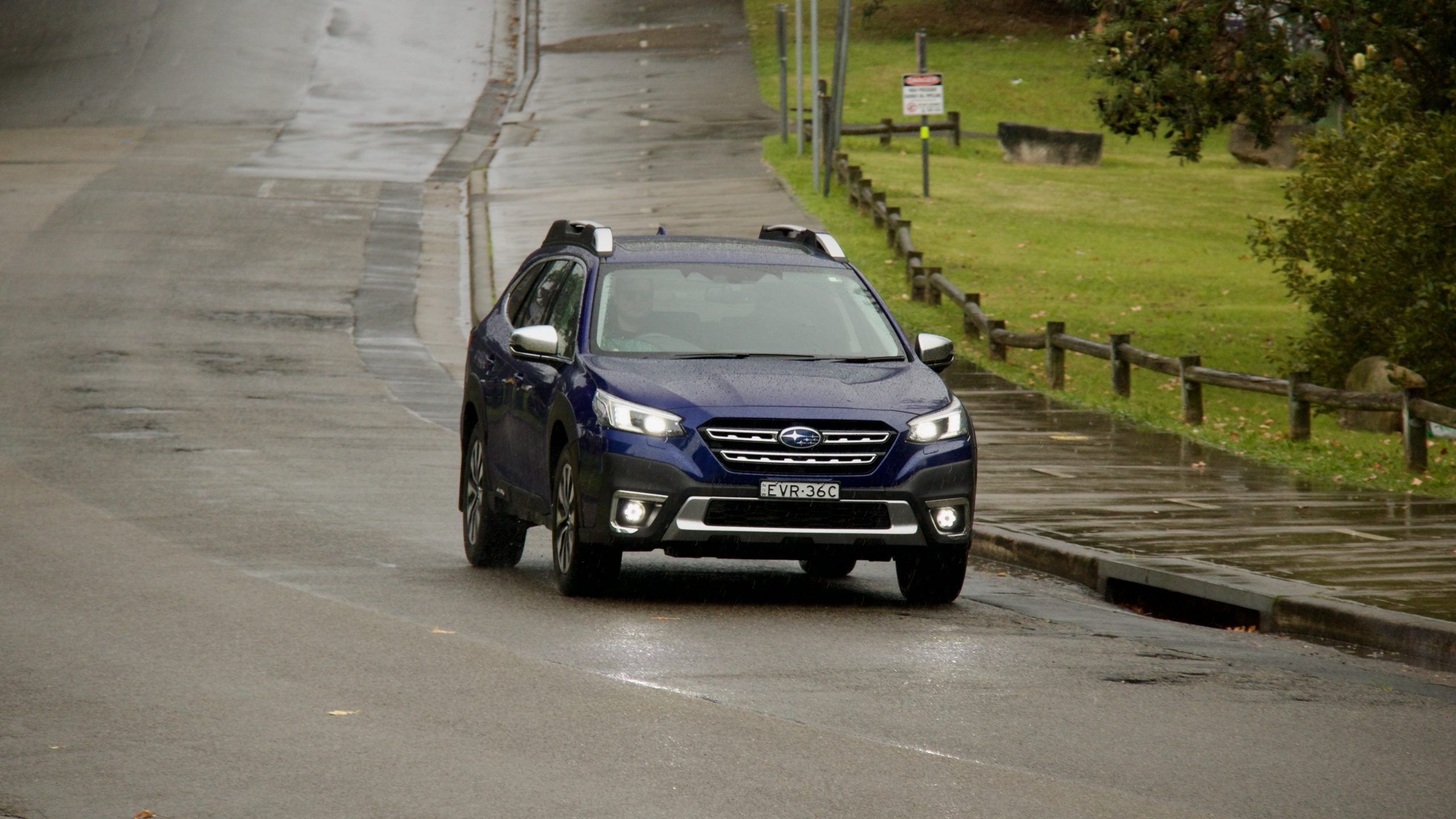
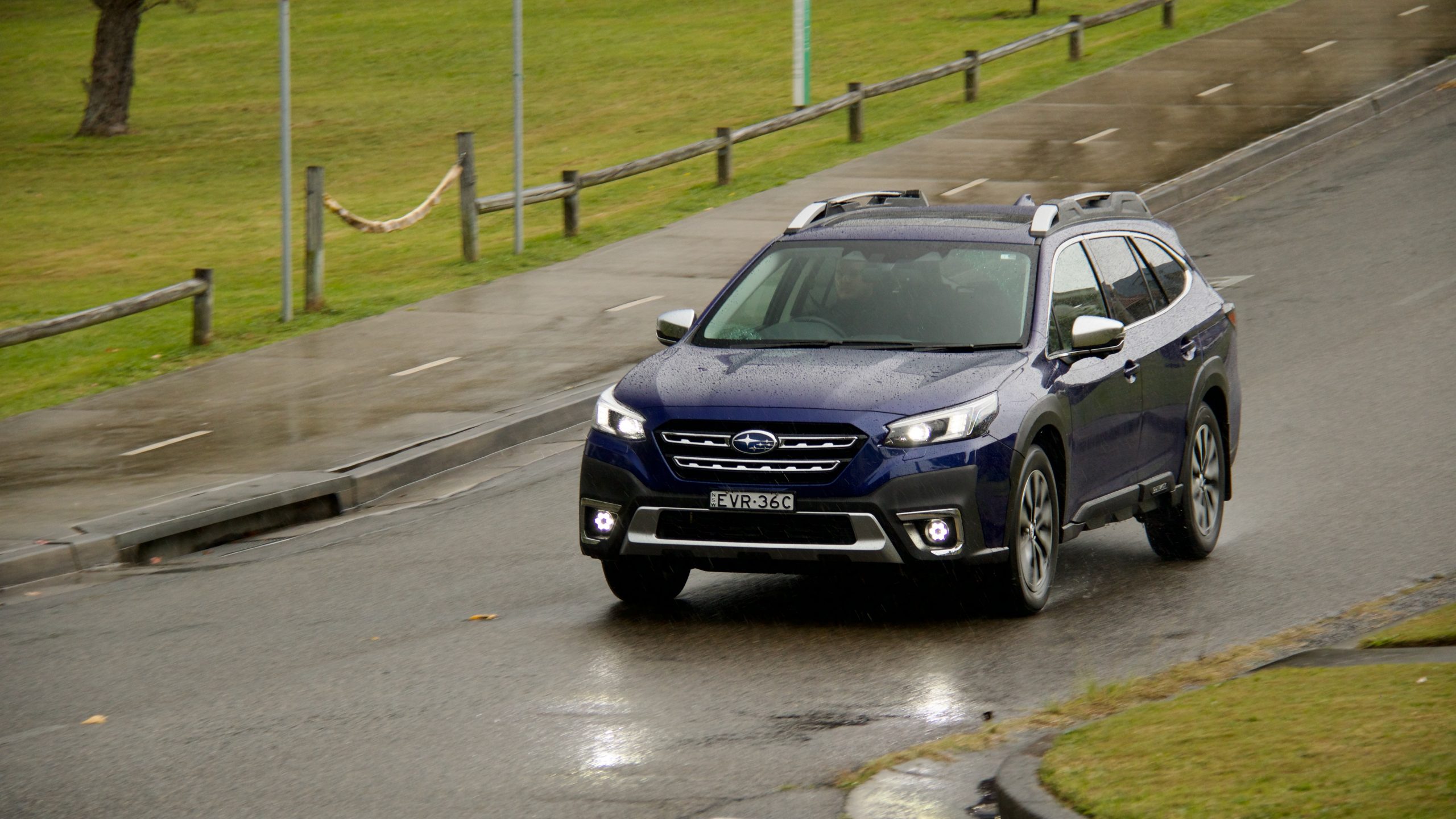
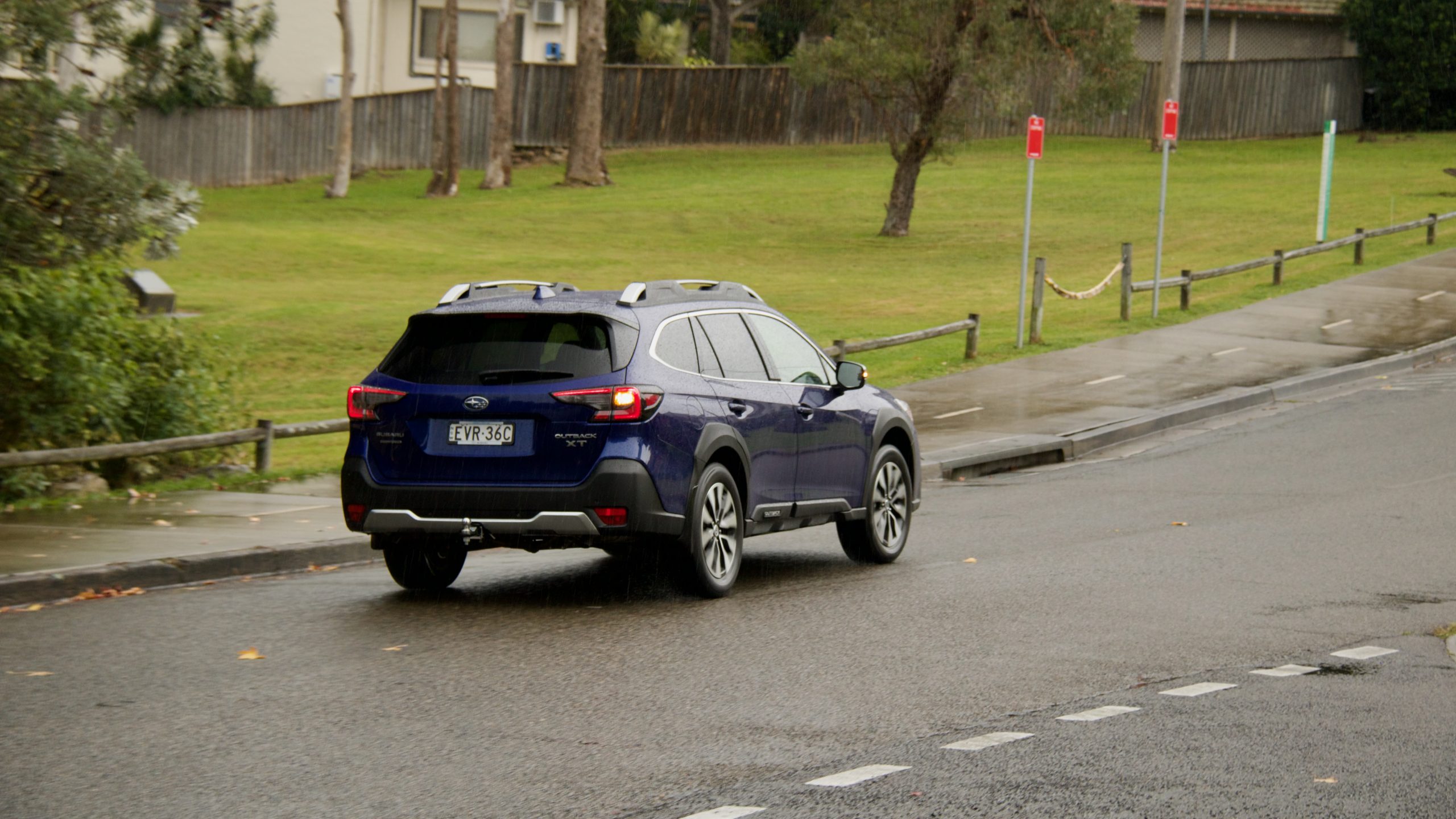
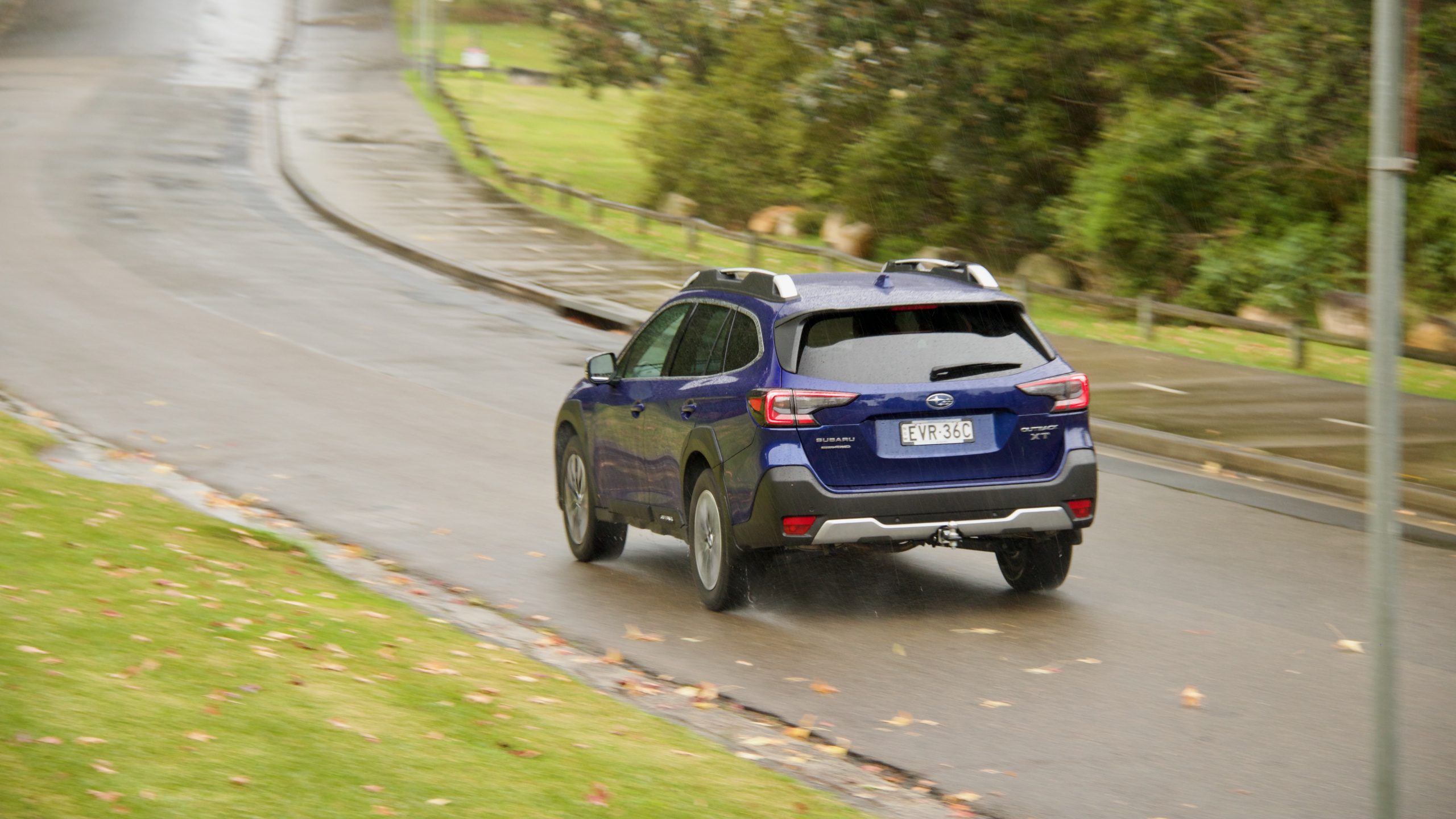
With ground clearance of 213mm, the Outback is more off-road friendly than the Passat Alltrack, which has a lesser ground clearance of 173mm. The braked towing capacity of the Outback XT is 2,400kg, which is 200kg more than the Passat Alltrack and 400kg more than the naturally aspirated Outback Touring. Helping off-road chops further is that the Outback has a full-sized alloy spare wheel.
Interior & Practicality: 9.5/10
The interior of the 2023 Subaru Outback Touring XT is a great place to spend time – it’s pretty good quality, quite practical, well featured and still feels like a Subaru. The quality inside the Outback Touring XT is quite nice with soft Nappa leather trim on the seats, soft touch plastics across the dashboard and door tops and quality switchgear like the new steering wheel controls, which feel nicer than the pre-facelifted Outback. Perceived quality is not quite as rock solid as the Passat, but it’s not far off.
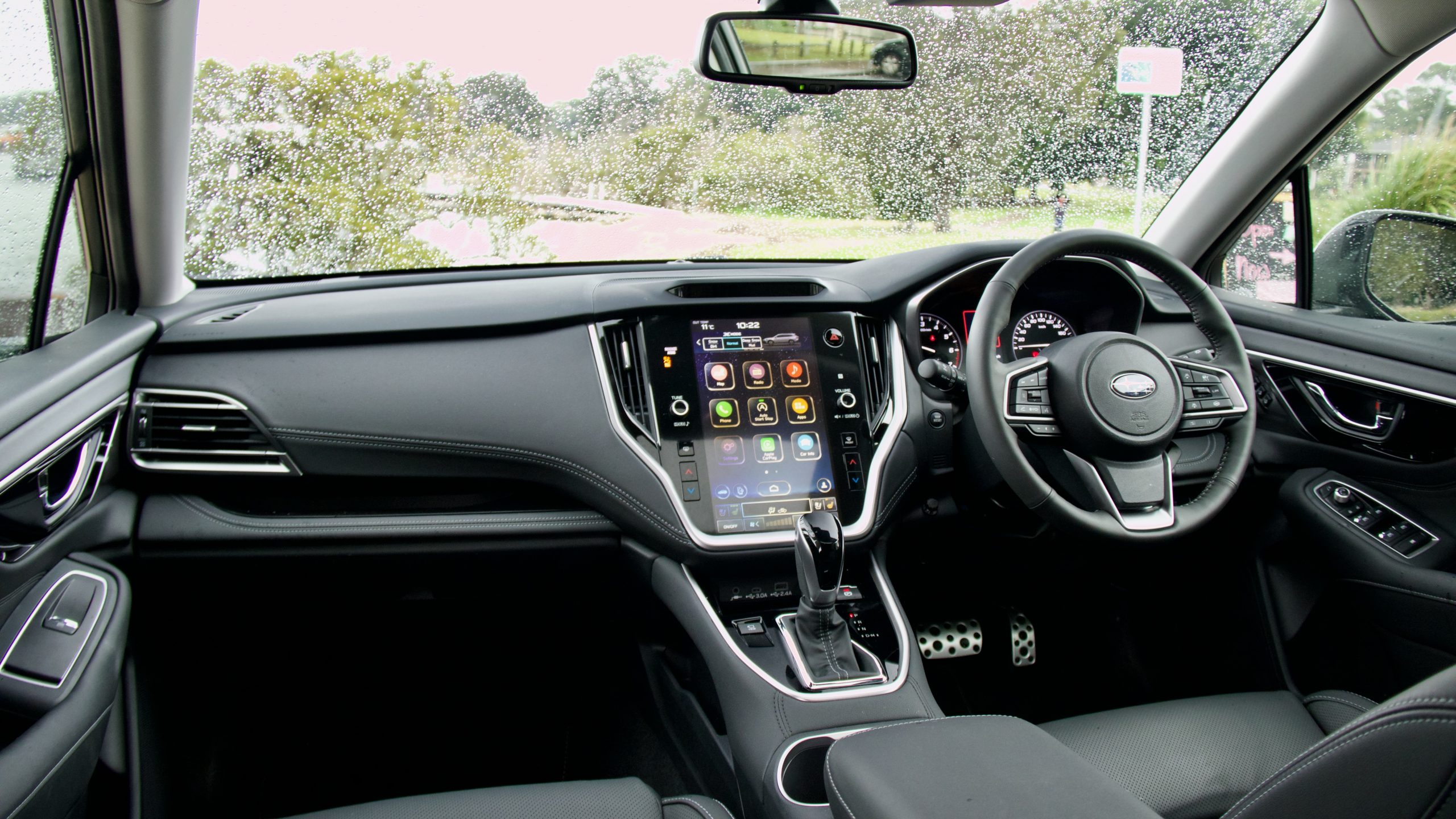
Centre of the cabin is an 11.6-inch touchscreen that’s well featured with wireless Apple CarPlay and Android Auto, satellite navigation and digital radio – though features like live traffic for the navigation would be a great addition. The screen itself is very easy to use with big icons, lots of colour and a quick response time though there is quite a lot of information being displayed, which can be a touch overwhelming. We appreciate the physical volume knobs and temperature adjusters, but too much of the car’s functionality is still buried in the touchscreen.
The nine-speaker Harman Kardon sound system is reasonably punchy though, but the system in the Passat Alltrack – also a Harman Kardon unit – offers more adjustability and feels more immersive to listen to. The analogue driver’s display dates the cabin slightly too – we hope the fully digital unit in the Japanese-spec Outback makes it to Australia soon.
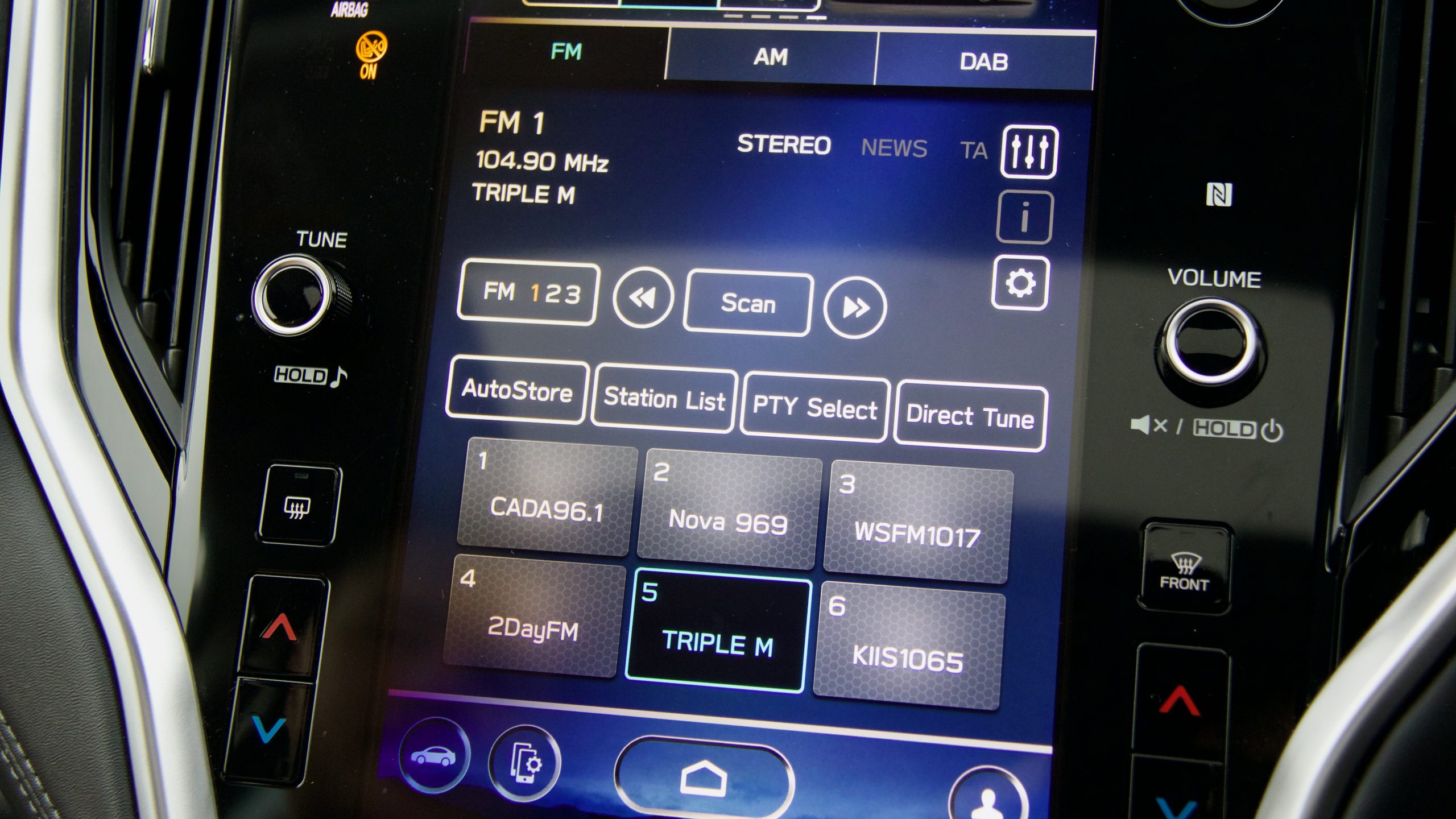
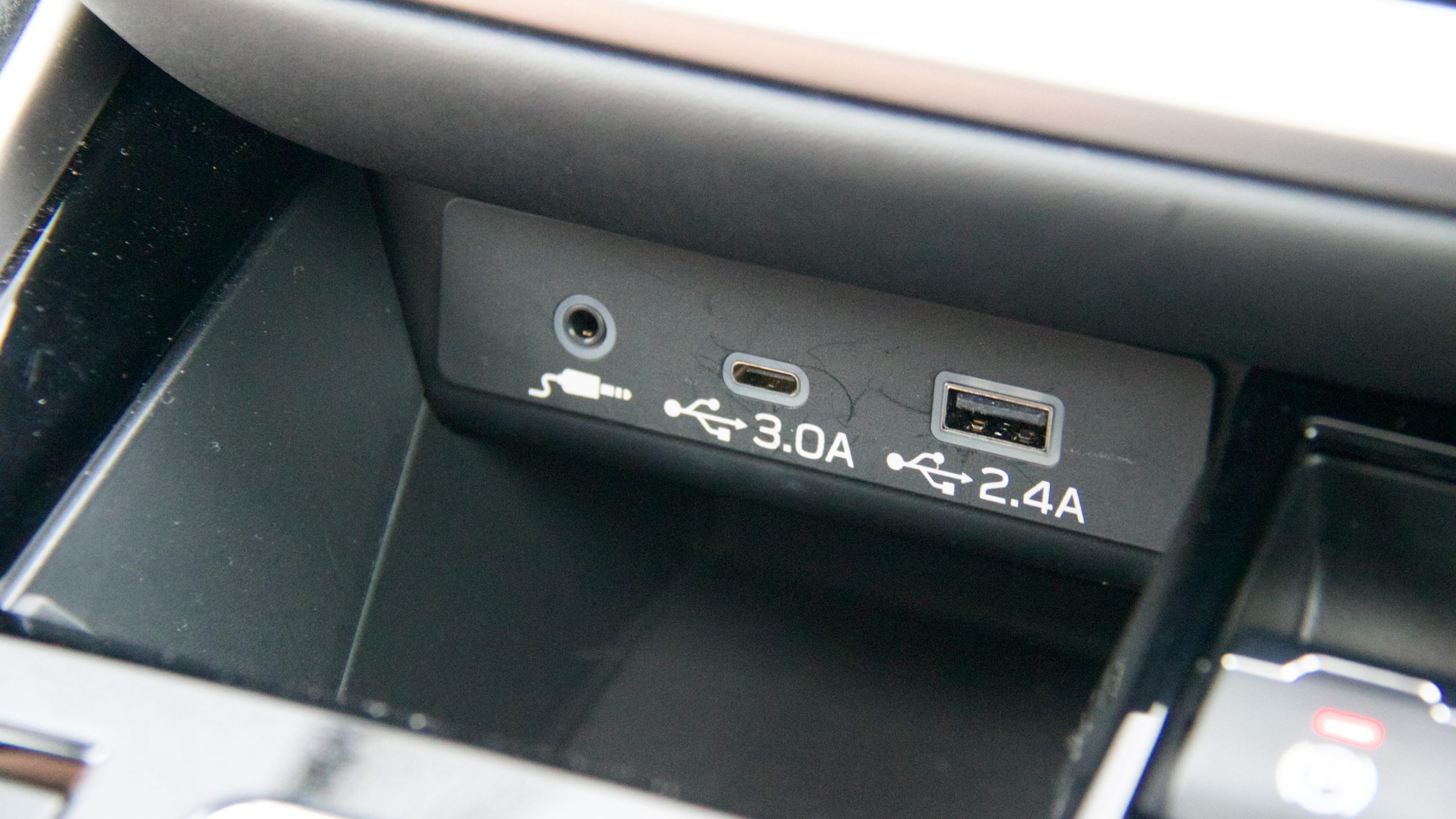
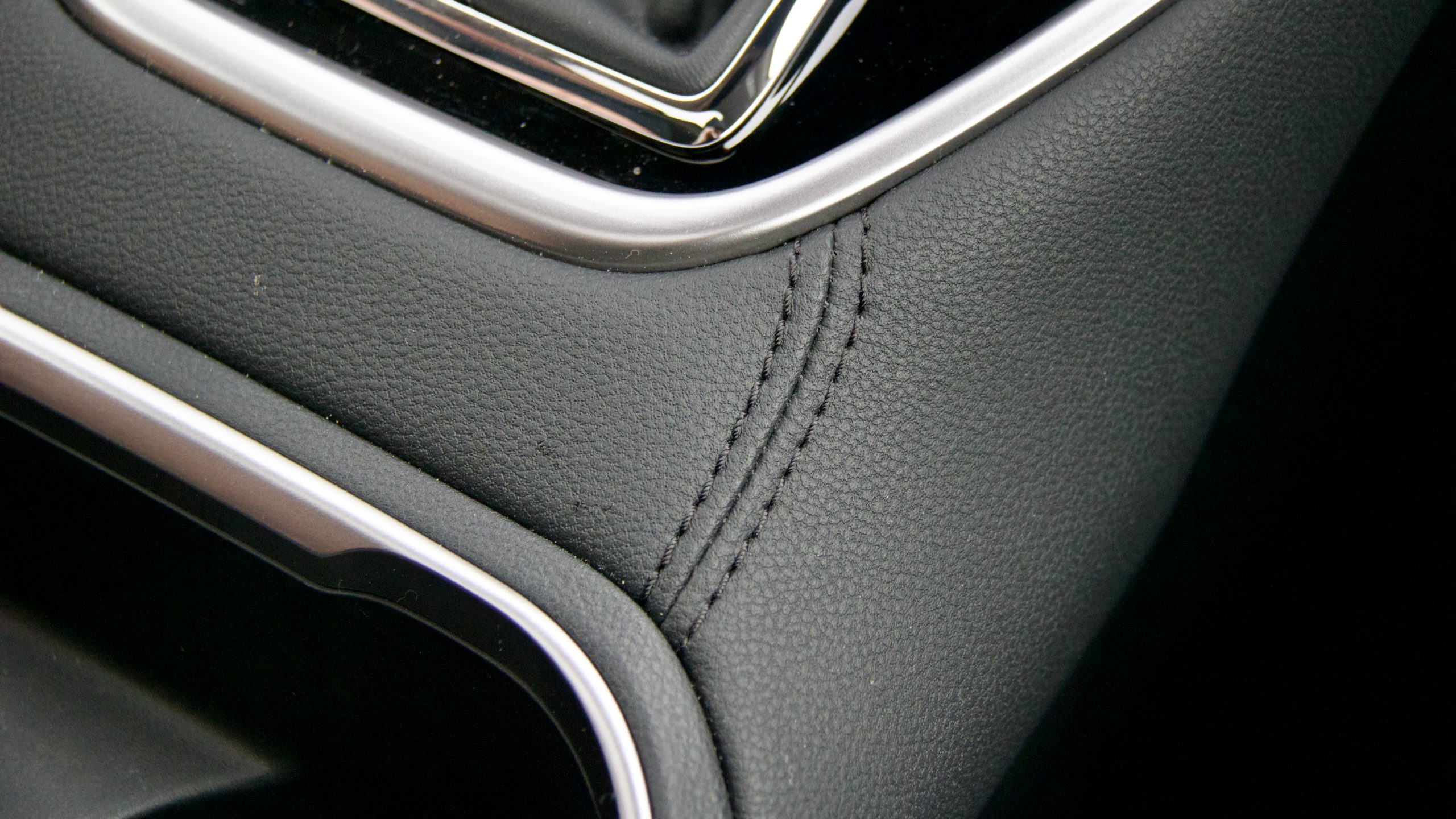
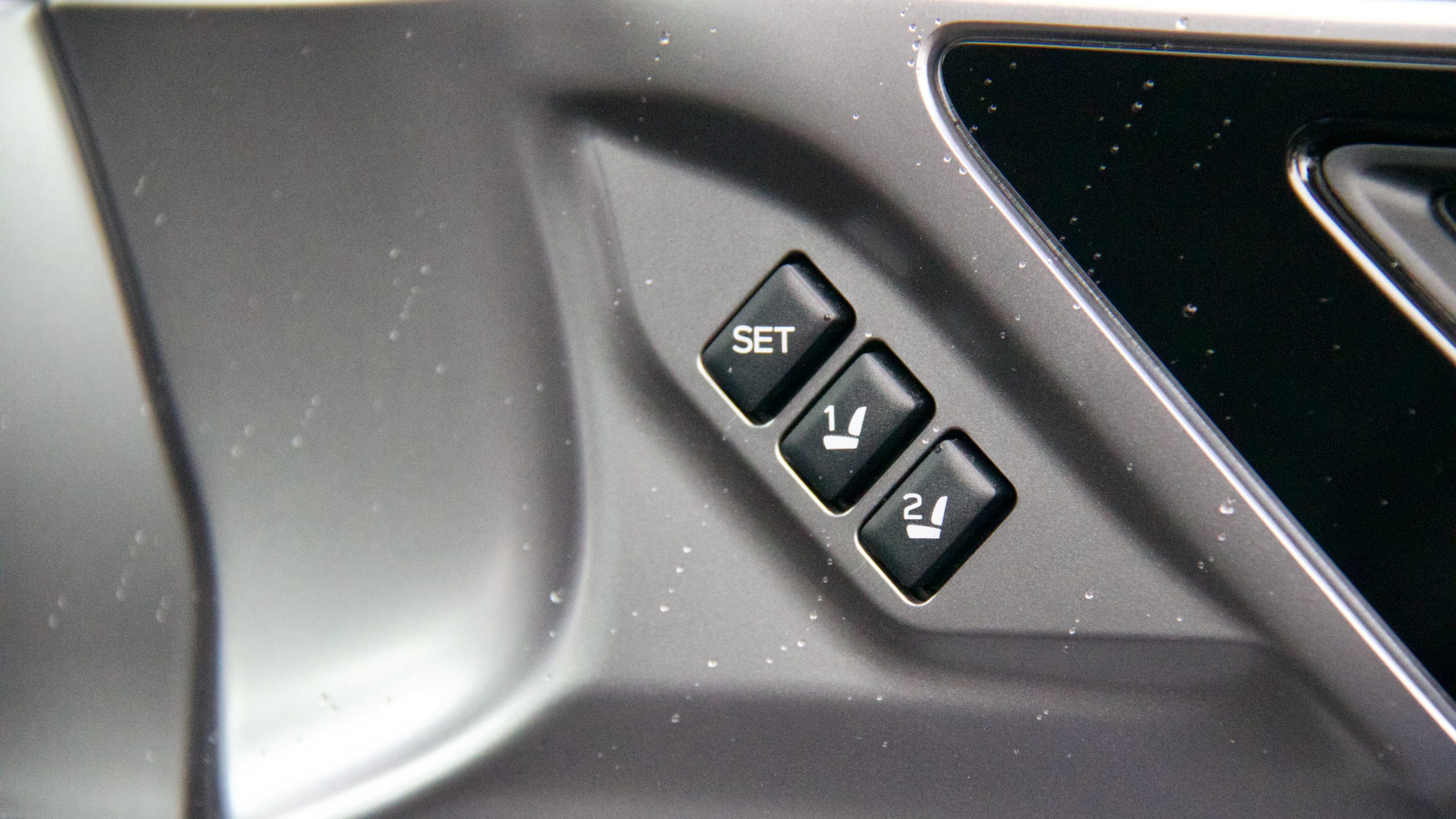
The Outback’s cabin is quite practical however, as you’d expect for a Subaru, with big door bins, big cup holders in the centre console, a tray to put a phone underneath the dashboard, a nice glovebox, a big box underneath the centre armrest – with a CD player! – and a handy storage slot on the passenger side of the centre console.
The back seat of the Outback is quite comfortable too, and reasonably roomy as well with good leg- and headroom for six-footers. It’s a well featured space with soft touch plastics on the doors, air vents, heated outboard seats, two USB-A charging ports, sectioned map pockets and reclining functionality for the seat. There are two ISOFIX points and three top-tether points for child seats.
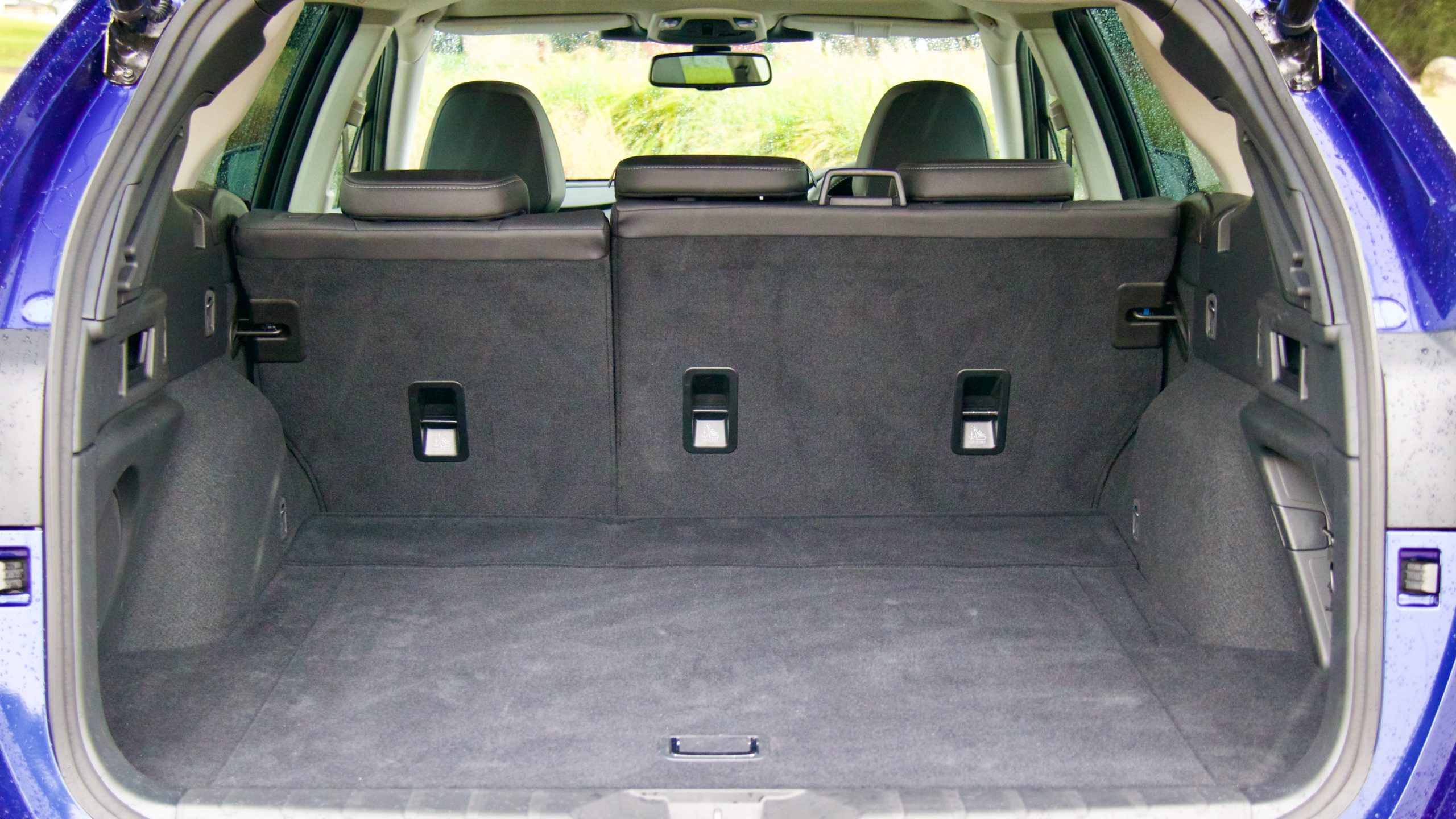
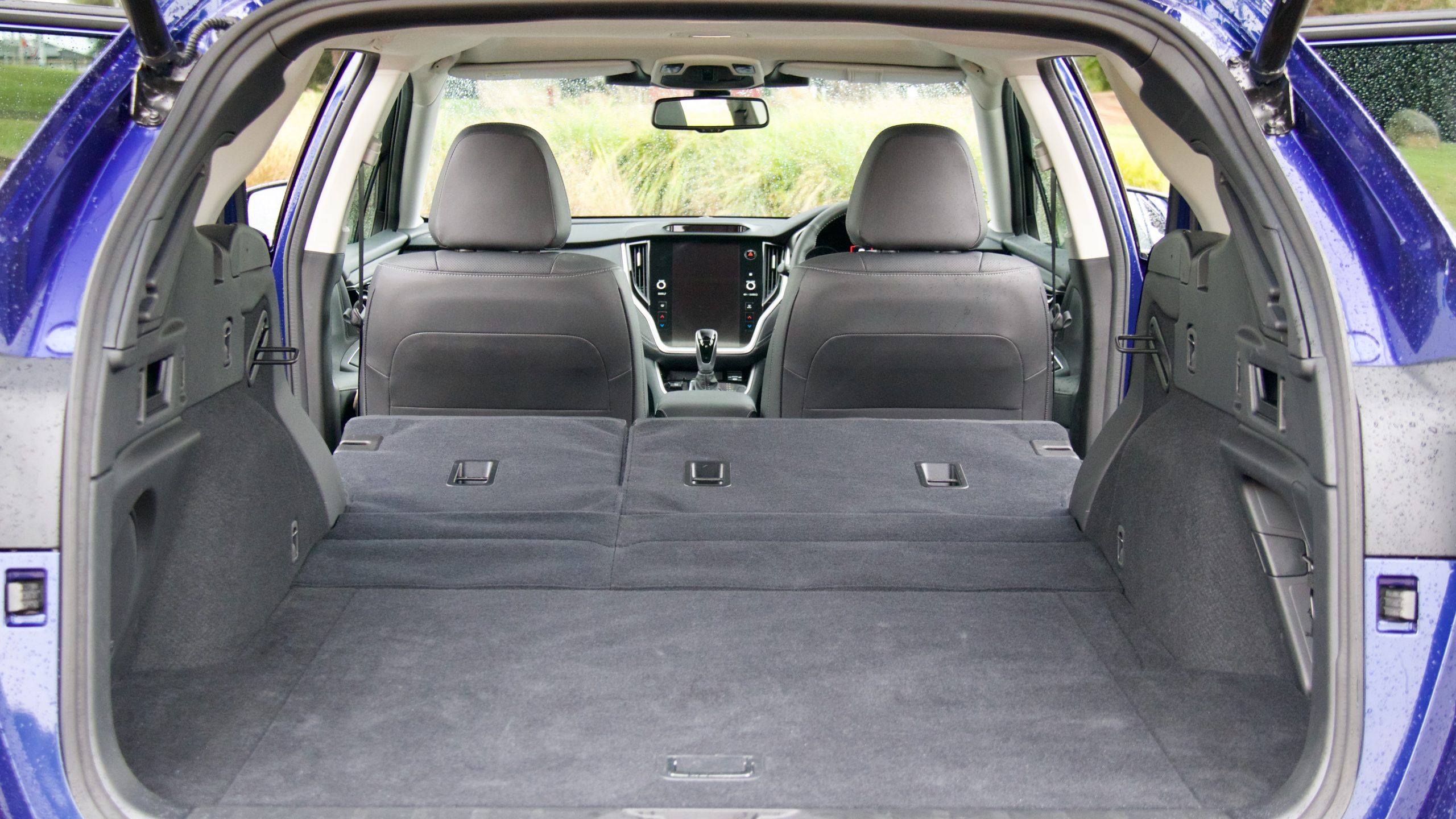
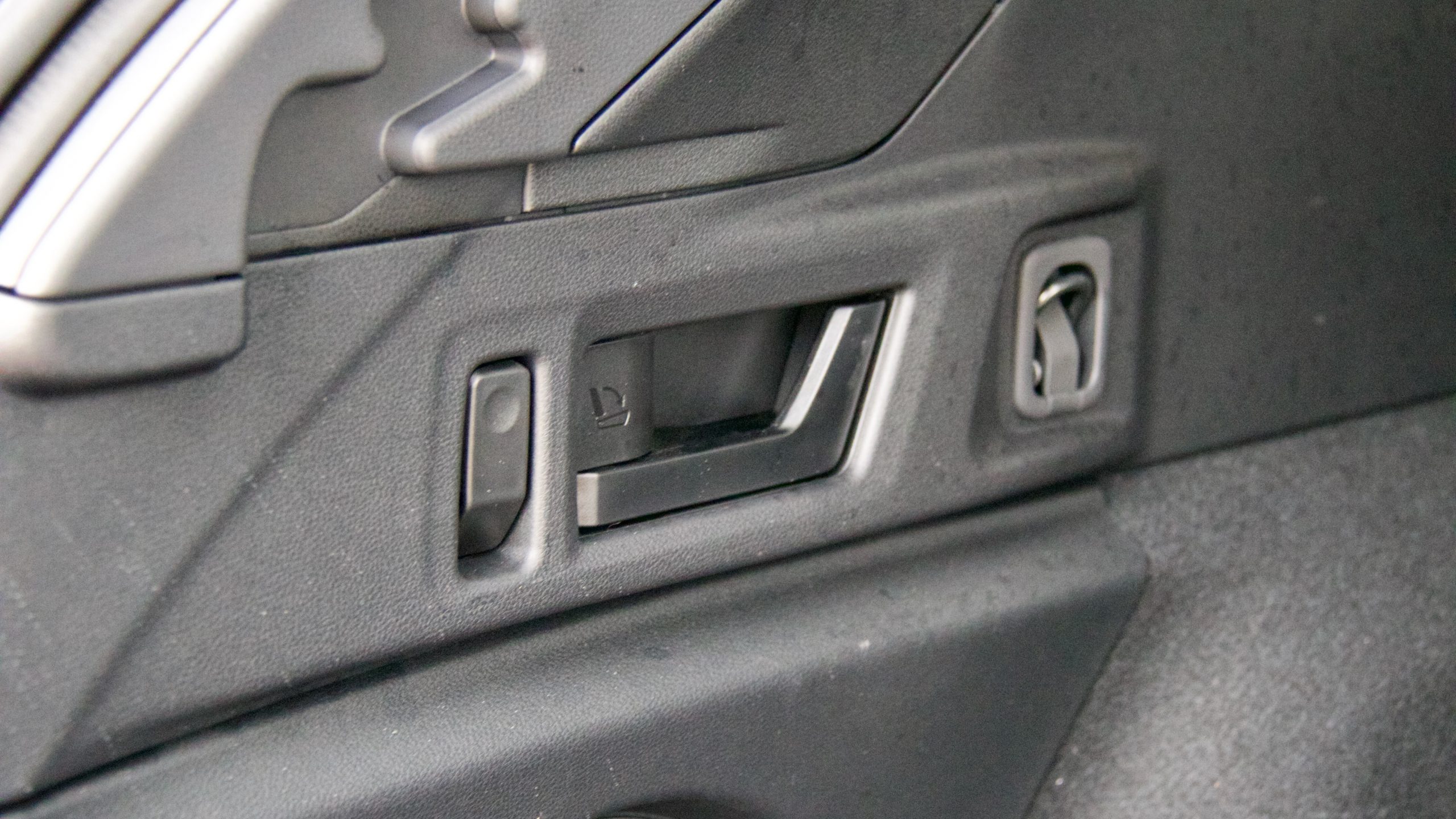
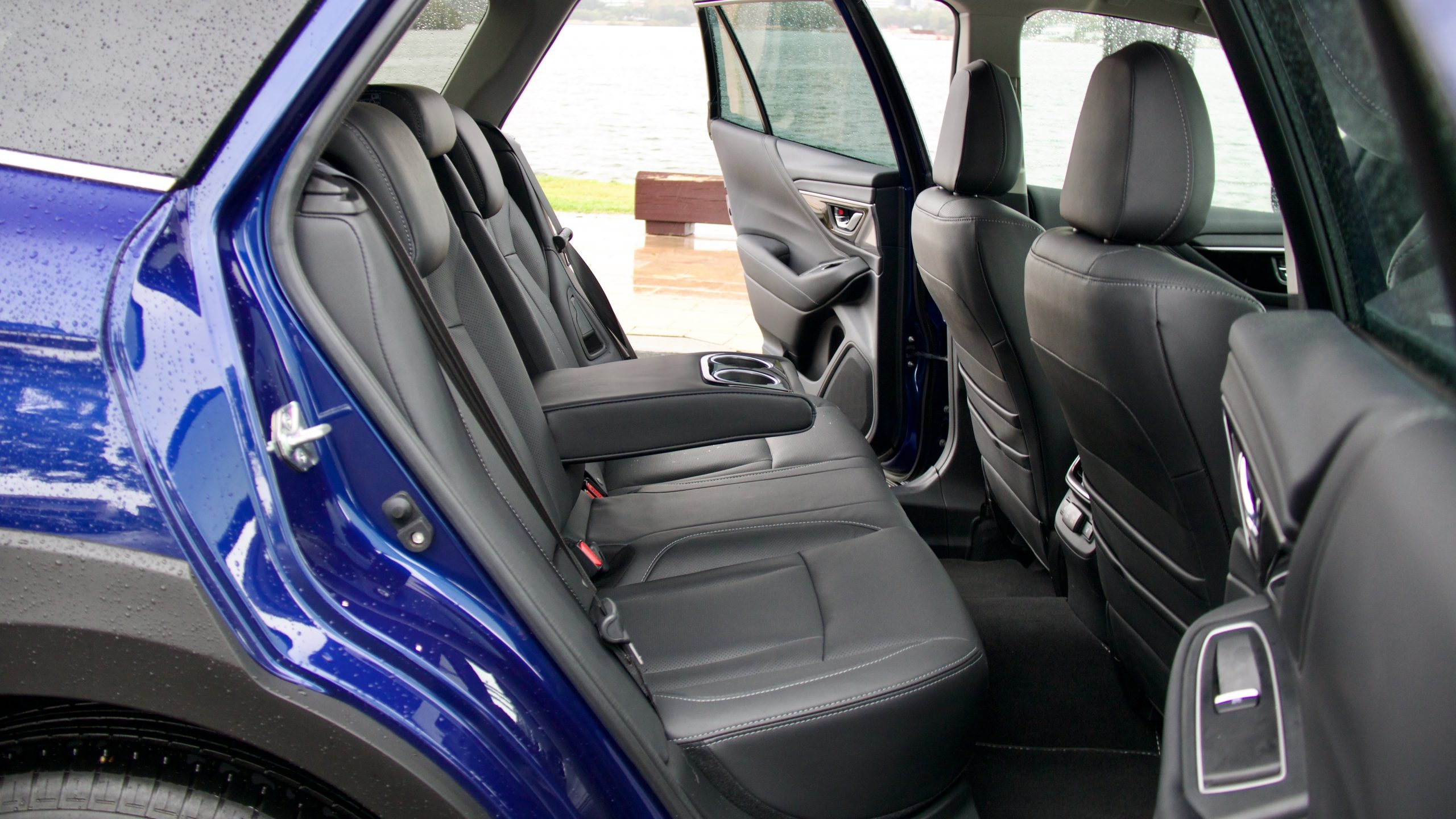
The boot of the Outback measures 522-litres with the seats up and 1,711L with the seats folded – smaller than the 650L/1,780L Passat Alltrack but still much larger than the 438L/1,340L Mazda CX-5. The boot is full of handy features like handles to fold the seats, hooks to hold bags, side underfloor storage and even a full-size alloy spare wheel – plus, both the boot opening and floor are at a good height and when the seats are folded, the floor is completely flat.
Service & Warranty: 8/10
Like all Subaru models, the 2023 Subaru Outback Touring XT comes with a five-year/unlimited km warranty with only 12 months of roadside assistance. The turbo Outback has longer intervals than the non-turbo model (15,000km versus 12,500km) and it’s actually less expensive to service – five years/75,000km of servicing the Outback XT costs $2,579.31 ($515.87 per service) versus $2,674.64 ($534.92 per service) for five years/62,500km of servicing for the Outback 2.5L.
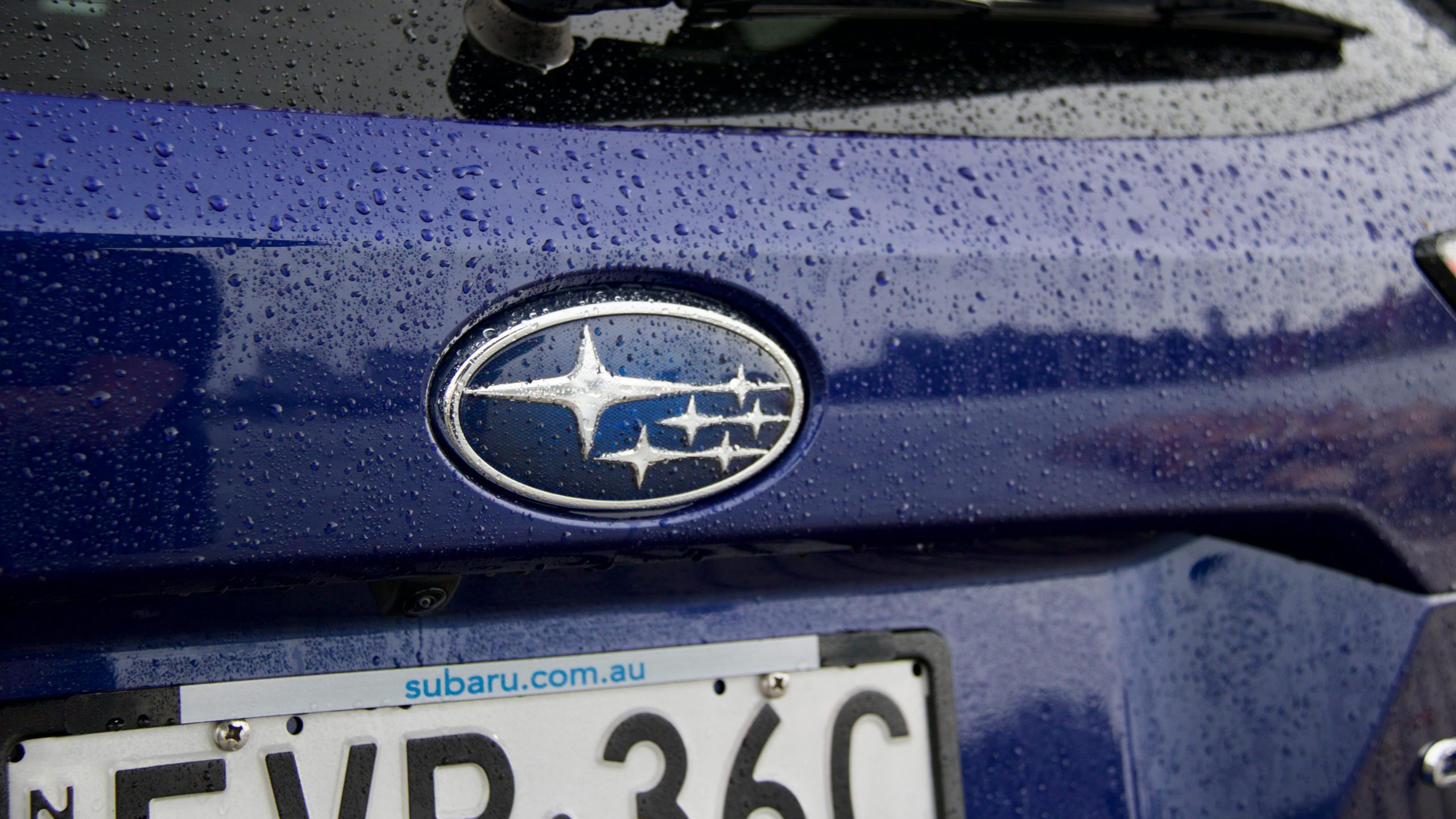
The Passat Alltrack also has a five-year/unlimited km warranty with 12 months of roadside assistance, but servicing it at a VW dealer renews the roadside assistance by a further 12 months (with no limit) each time. Five years/75,000km of servicing the Passat costs $3,909 ($782 per service) – though this cost can be lessened by choosing a service pack at the time of purchase for $3,100 ($620 per service).
The 2023 Subaru Outback Touring XT DiscoverAuto Rating:
Overall, the 2023 Subaru Outback Touring XT is a really likeable car and it’s easy to see why Outbacks have been so popular in Australia (aside from being named after our great country) ever since they were released. Put simply, the Outback is an excellent family car: it’s spacious, very comfortable, has a big boot, lots of useable tech and, as you’d expect for a Subaru, it’s very safe. The new turbocharged engine adds the performance lacking in the regular Outback range and we’d definitely choose it.
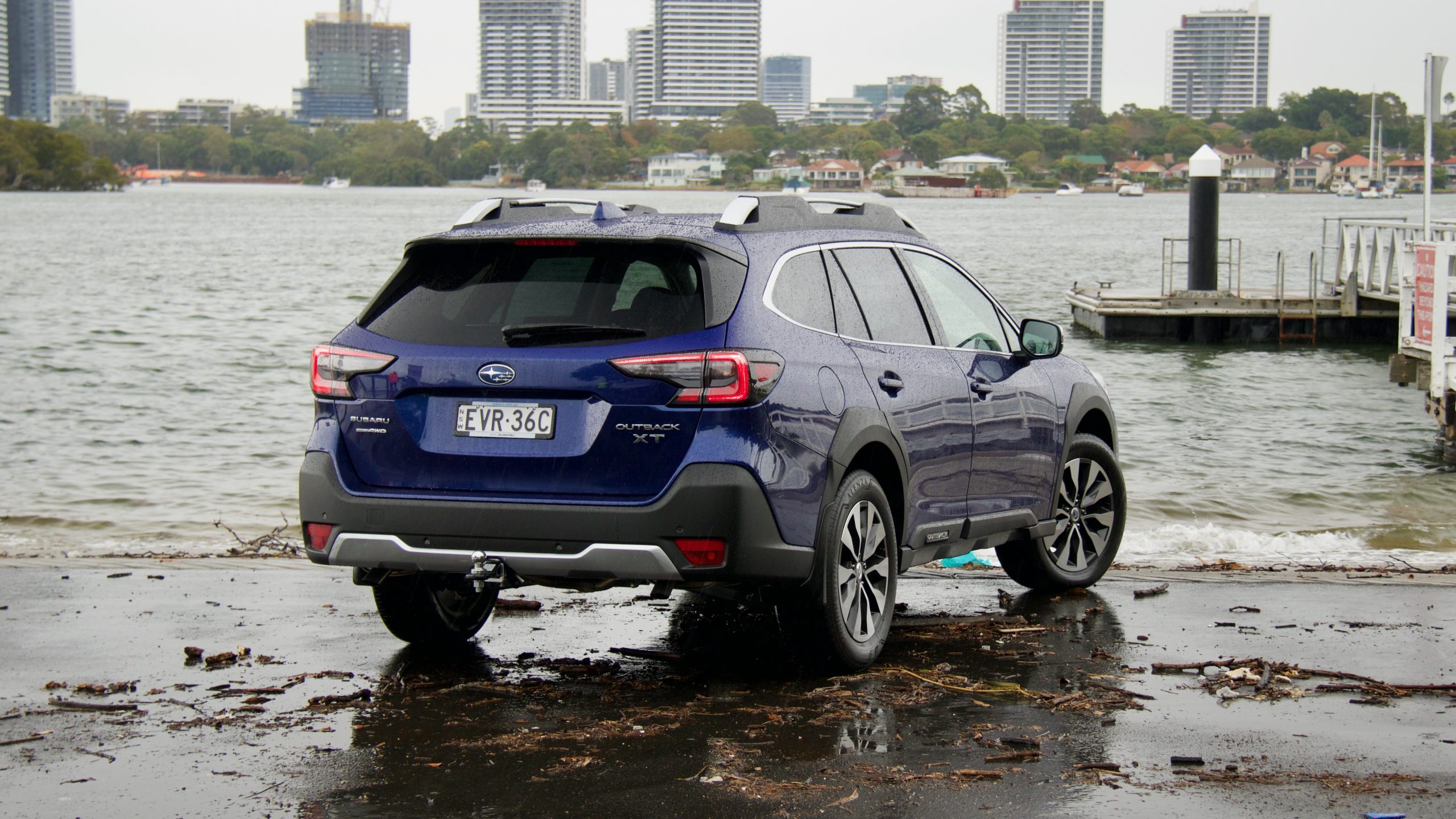
It’s not perfect, however – the new engine doesn’t transform the character of the car, it can be quite thirsty, it’s not exactly cheap to service, it’s missing some equipment and the CVT transmission zaps some life out of the engine. But overall, these are small negatives in what is a great offering from Subaru and we can’t think of a better vehicle that can so easily fit into everyday life, be it in the inner city or, as the name suggests, the outback. Better still, it proves that you don’t need an SUV to own a well-rounded family car – the wagon, once again, has proved superior.
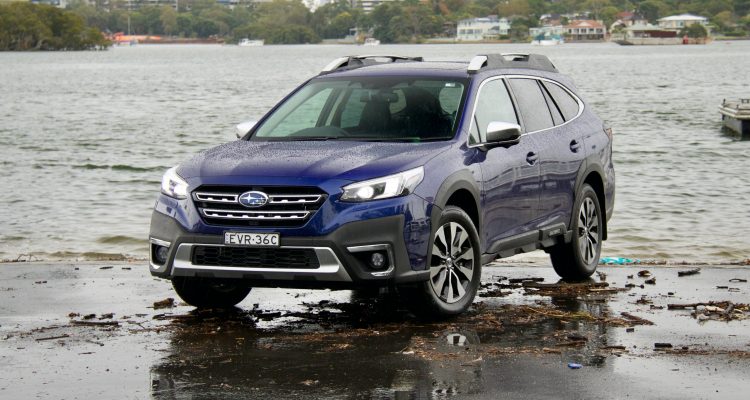
Leave a Reply